In the realm of literature, few genres encapsulate the spirit of limitless imagination and unparalleled creativity as profoundly as epic fantasy.
Epic fantasy novels stand as towering monuments, weaving tales of grandeur, magic, and mythical landscapes that extend far beyond the confines of our everyday reality.
Central to the allure of these narratives is the intricate artistry of world-building, a craft that transports readers to realms where dragons soar, ancient empires rise and fall, and the very fabric of reality is shaped by the whims of gods and the courage of mortals.
Epic fantasy world-building is an alchemical blend of geography, cultures, history, and magic.
It is an act of creation that goes beyond the physical, breathing life into the very essence of the narrative.
The allure of epic fantasy isn’t just escapism, but in the exploration of universal themes—identity, power, morality—that resonate through the fantastical landscapes.
Through the lens of world-building, authors create not just settings but living, breathing characters in themselves.
Whether it’s the ethereal beauty of C.S. Lewis’s Narnia or the gritty, war-torn landscapes of Steven Erikson’s Malazan Empire, each world becomes a testament to the author’s ability to mold and shape reality itself.
Definition of Epic Fantasy
Epic fantasy is a genre of speculative fiction that immerses readers in expansive and fantastical worlds, often characterized by grand scale narratives, mythical elements, and heroic journeys.
At its core, epic fantasy transports readers to realms vastly different from our own, where magic, mythical creatures, and ancient prophecies shape the fabric of reality.
These narratives frequently unfold in secondary worlds, richly detailed and intricately constructed by the author.
What distinguishes epic fantasy from other fantasy subgenres is the sheer magnitude of its scope and the monumental quests undertaken by its characters.
These stories often revolve around the struggle between forces of good and evil, the discovery of one’s destiny, and the triumph of the human spirit in the face of overwhelming odds.
One hallmark of epic fantasy is the meticulous attention given to world-building.
Authors in this genre craft entire universes with unique histories, cultures, languages, and mythologies. The geography of these worlds can range from sprawling landscapes filled with diverse civilizations to mysterious and foreboding realms teeming with magic.
Moreover, epic fantasy frequently introduces complex systems of magic that are intrinsic to the narrative, shaping both the plot and the characters’ development.
The genre’s narratives often unfold across multiple volumes, allowing for extensive exploration of the intricacies within the world and the characters’ evolving arcs.
Epic fantasy draws inspiration from myth, folklore, and ancient legends, incorporating timeless themes and archetypes. Heroes and heroines embark on epic quests, facing formidable adversaries, enduring personal trials, and often discovering latent powers within themselves.
The genre provides a canvas for exploring universal truths, morality, and the eternal battle between light and darkness.
In essence, epic fantasy serves as a gateway to extraordinary realms, inviting readers to embark on journeys that transcend the boundaries of our mundane reality and tap into the limitless possibilities of imagination.
Significance of World-Building in Epic Fantasy
The significance of world-building in epic fantasy cannot be overstated, as it serves as the cornerstone upon which these captivating narratives are constructed.
World-building is the art of crafting a vivid and immersive setting that not only acts as a backdrop for the story but becomes an integral character in its own right.
The success of an epic fantasy novel often hinges on the author’s ability to transport readers into a meticulously designed and thoughtfully realized alternate reality.
One of the primary functions of world-building in epic fantasy is to provide a canvas for boundless imagination.
These novels thrive on the extraordinary, and the intricacies of the world contribute to the suspension of disbelief, enabling readers to embrace magical systems, mythical creatures, and fantastical landscapes.
A well-constructed world becomes a playground for the author’s creativity, allowing them to defy the constraints of our mundane reality and introduce elements that challenge conventional norms.
Moreover, epic fantasy worlds serve as vehicles for thematic exploration. By developing unique cultures, histories, and social structures, authors can delve into complex issues and universal truths.
World-building becomes a powerful tool for examining morality, power dynamics, and the human condition, offering readers a lens through which to explore and reflect on their own world.
Additionally, the immersive quality of a well-built fantasy world enhances reader engagement. When executed skillfully, world-building draws readers into the narrative, sparking a sense of wonder and curiosity.
A meticulously crafted world becomes a place of escape, inviting readers to suspend reality and embark on epic adventures alongside the characters. The emotional investment in the world and its inhabitants is heightened, creating a more profound and lasting impact on the reader.
The significance of world-building in epic fantasy novels lies in its ability to elevate the narrative beyond the ordinary.
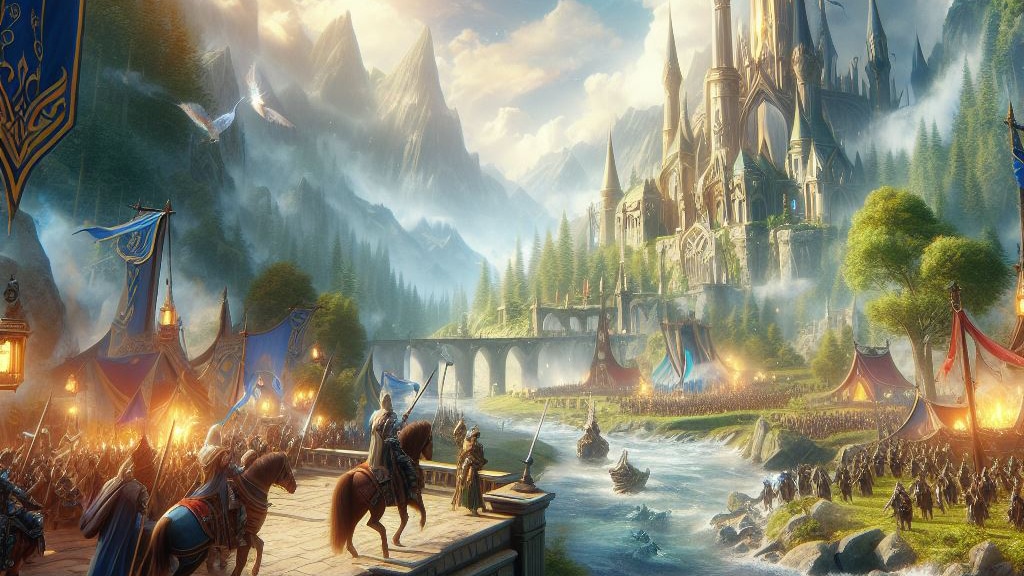
It transforms stories into immersive experiences, unlocking the door to realms where the fantastical becomes tangible, and where readers can explore the boundless depths of the author’s imagination.
The success of epic fantasy often hinges on the synergy between a compelling narrative and a meticulously constructed world, creating a literary tapestry that resonates with readers long after the final page is turned.
Epic fantasy novels, with their enchanting realms and mythical landscapes, owe much of their allure to the meticulous art of world-building. In this exploration, we delve into the very foundation of world-building, dissecting its key components and understanding its pivotal role in shaping the narrative tapestry of epic fantasy.
Definition and Components of World-Building
At the heart of epic fantasy lies a world teeming with life, magic, and history, meticulously crafted by the author. World-building involves the careful construction of this alternate reality, and its success relies on several key components.
Geography and Maps
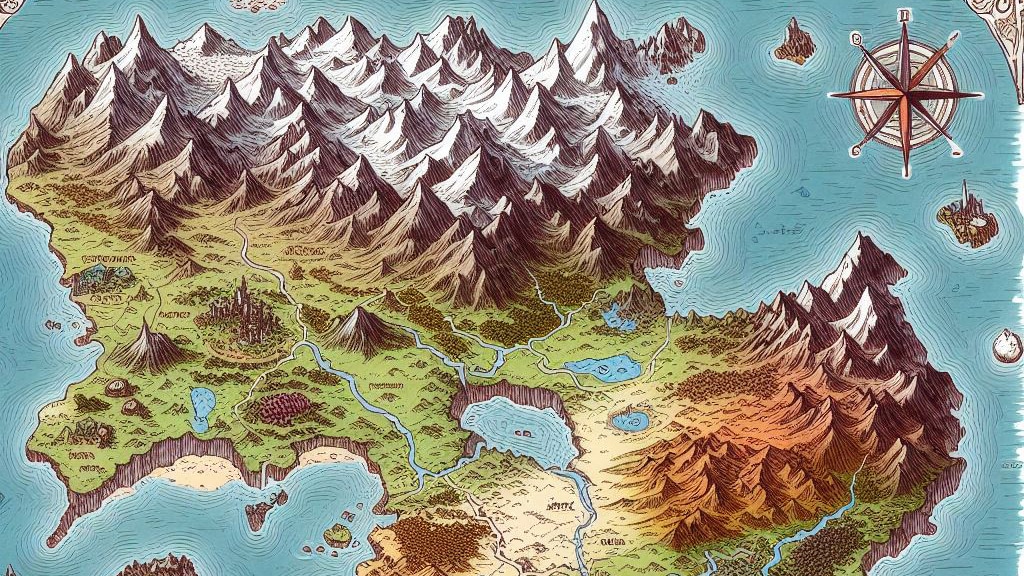
Geography stands as the fundamental underpinning that breathes life into the narrative of an epic fantasy.
This genre thrives on the creation of lands unknown, and the sprawling landscapes within these realms become more than mere backdrops—they are characters in their own right, influencing the course of events and shaping the destinies of those who traverse them.
Sprawling mountain ranges, their jagged peaks reaching toward the heavens, create natural barriers and epic vistas that instill a sense of awe and wonder.
These formidable barriers can separate civilizations, sparking tales of intrepid journeys and courageous adventurers seeking passage through treacherous mountain passes.
The geography, in this case, becomes a testament to the resilience of characters facing adversity.
Enchanted forests, with their mystical flora and fauna, add an ethereal quality to the world.
These woodlands often serve as places of mystery, harboring ancient secrets, magical creatures, or hidden realms.
Navigating through these enchanted forests becomes a rite of passage for characters, and the geography shapes their experiences, forcing them to confront the unknown and unlocking the potential for discovery and transformation.
In the context of world-building, maps emerge as indispensable tools, serving both authors and readers alike.
For authors, the creation of detailed maps is a meticulous process that requires consideration of topography, distances, and key landmarks.
Maps serve as blueprints for the author’s imagination, ensuring consistency in geography and providing a visual aid for the seamless integration of various locations within the narrative.
For readers, these maps become treasured companions, offering a tangible connection to the fantastical realms they explore vicariously through the characters.
The intricate details of the maps not only enhance the reading experience but also serve as practical guides, allowing readers to trace the characters’ journeys, understand the spatial relationships between different regions, and gain a deeper appreciation for the scale and scope of the epic landscape.
The geography of an epic fantasy world is not merely a static setting; it is a dynamic force that influences the unfolding narrative.
Mountains, forests, deserts, and seas become the stages upon which grand adventures and epic quests play out.
Through the artful crafting of geography, authors breathe authenticity and life into their worlds, inviting readers to embark on journeys that transcend the boundaries of the ordinary and explore the uncharted territories of the extraordinary.
Epic Fantasy Cultures and Societies
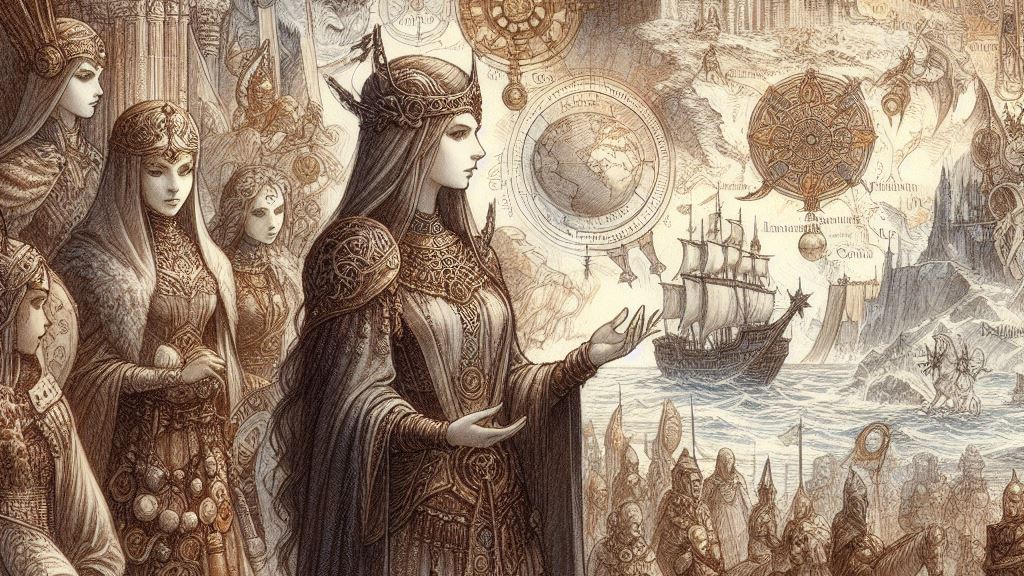
Within the landscapes of epic fantasy, the richness of cultures and societies serves as a tapestry that elevates the narrative beyond mere escapism.
Authors intricately intertwine the customs, languages, and social structures of diverse civilizations, creating a mosaic of human experience and cultural diversity that enriches the very fabric of their created worlds.
The diversity in cultures breathes life into the realms, presenting readers with a kaleidoscope of traditions, rituals, and belief systems.
Each culture possesses its own unique customs, from elaborate ceremonies marking rites of passage to daily practices that reflect their worldview.
These cultural nuances infuse authenticity into the narrative, fostering a sense of immersion that allows readers to connect emotionally with the characters and their respective societies.
Languages, as essential components of cultural identity, add another layer of complexity to epic fantasy worlds.
Authors go beyond mere linguistic diversity, imbuing languages with historical contexts and regional influences.
The linguistic landscape becomes a reflection of the world’s intricate history, creating a sense of continuity that resonates with readers.
The use of different languages in dialogue adds depth, realism, and a touch of the exotic, transporting readers to realms where the cadence of speech mirrors the diversity of the cultures they encounter.
Social structures within these civilizations play a pivotal role in shaping the dynamics of the narrative.
From monarchies ruled by powerful dynasties to egalitarian societies where leadership is earned, the societal frameworks influence character motivations and interactions.
Authors explore themes of power, hierarchy, and societal expectations, providing readers with a lens through which to examine parallels in their own world.
The complexity of societal structures adds layers of intrigue, as characters navigate through the intricacies of political intrigue, social expectations, and the clash of differing worldviews.
This cultural richness extends beyond world-building aesthetics; becoming a fertile ground for profound exploration of themes such as diversity, identity, and societal dynamics.
Authors use the diversity of their created worlds to delve into the complexities of relationships between different cultures and the challenges characters face when bridging cultural gaps.
Themes of acceptance, understanding, and the celebration of differences emerge organically from the interactions between characters representing diverse backgrounds.
In essence, the meticulous weaving of diverse cultures and societies in epic fantasy novels transcends the confines of fantastical escapism.
It becomes a mirror reflecting the kaleidoscope of humanity, inviting readers to explore not only the extraordinary landscapes but also the intricate interplay of cultures, languages, and social structures.
Through this exploration, epic fantasy becomes a powerful medium for authors and readers alike to ponder the profound questions of diversity, identity, and the dynamic tapestry of human experience.
History and Mythology
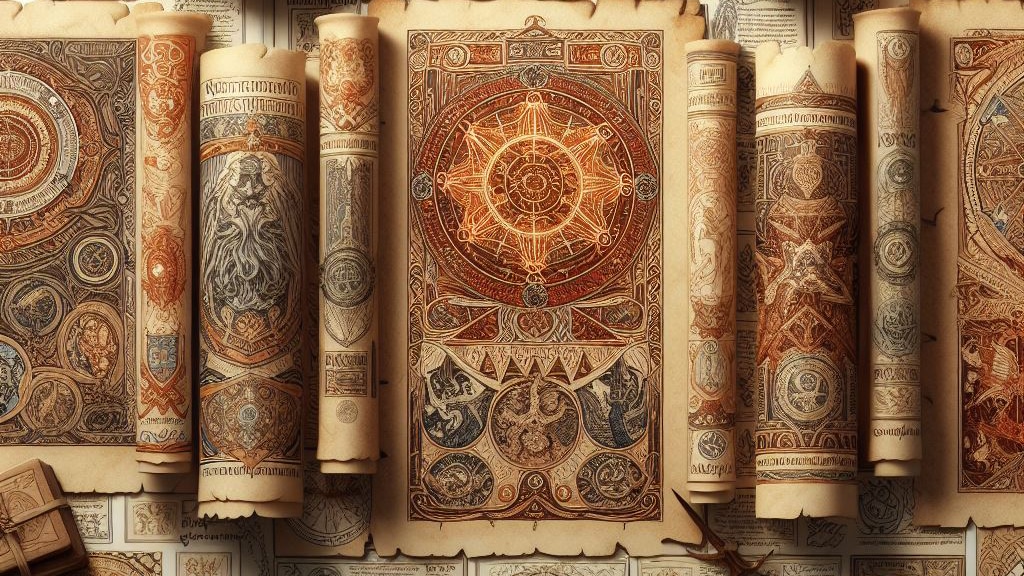
History and mythology emerge as foundational elements of fantasy novels, serving as the bedrock upon which the unfolding epic is built.
History, as portrayed in these fantastical landscapes, is not a mere chronicle of events; it is a living entity with a palpable presence.
Authors craft intricate timelines that span ages, detailing the rise and fall of civilizations, the ebb and flow of conflicts, and the emergence of pivotal figures whose deeds shape the destiny of the world.
This historical backdrop provides a sense of continuity, anchoring the narrative in a temporal reality that extends far beyond the immediate events of the story.
Mythology, with its tapestry of gods, heroes, and ancient legends, adds another layer of complexity to the temporal landscape.
These myths are not mere embellishments but integral components that influence the characters’ beliefs, motivations, and the very fabric of the societies they inhabit.
Mythical tales of creation, epic battles, and divine intervention become part of the cultural heritage, shaping the worldview of the characters and providing a lens through which they interpret their own existence.
The temporal depth created by a well-crafted history and mythology enhances the sense of realism within the epic fantasy world.
Readers are not merely spectators of the story; they become time-travelers, journeying through epochs marked by profound changes, cataclysmic events, and the gradual evolution of societies.
This temporal scope fosters a sense of immersion, as readers witness the consequences of past actions rippling through the present, shaping the characters’ dilemmas and influencing their choices.
Furthermore, the rich tapestry of history and mythology provides context for the unfolding epic. Characters grapple with inherited legacies, confront ancient prophecies, and navigate the shadows cast by historical injustices.
The weight of the past becomes a tangible force, shaping the characters’ motivations and driving the overarching narrative forward.
This interplay between past and present adds layers of complexity, as characters find themselves entwined in the ongoing saga of their world’s history.
In essence, the exploration of history and mythology in epic fantasy goes beyond world-building; it becomes a narrative archaeology, unearthing the layers of time that define the world and its inhabitants.
Authors masterfully intertwine these temporal elements, creating a sense of continuity, depth, and resonance that elevates the epic fantasy genre to new heights.
Through this exploration, the past becomes not just a backdrop but an active participant, guiding characters and readers alike on an epic journey through the corridors of time.
Magic Systems
Magic, a fundamental element of the fantasy genre, creates a realm where the extraordinary becomes possible.
This mystical force requires careful crafting, necessitating the establishment of clear rules and systems to govern its presence within these fantastical landscapes.
Whether manifested through elemental forces, ancient incantations, or mystical artifacts, the magic systems within these worlds become integral components that shape the very fabric of reality.
The diversity of magical manifestations is a testament to the boundless creativity of authors within the genre.
Elemental magic, harnessing the forces of nature like fire, water, earth, and air, provides characters with extraordinary powers rooted in the very elements that make up their world.
Ancient incantations, steeped in arcane knowledge and mystical languages, offer a more cerebral and ritualistic approach to magic, where the recitation of specific words or phrases unleashes potent spells.
Meanwhile, mystical artifacts, imbued with ancient energies or created through powerful enchantments, become conduits for magical abilities, offering characters a tangible link to the arcane.
Consistency in the application of magic within these worlds is paramount.
It establishes a framework of rules that govern the limitations and capabilities of magical forces, preventing the narrative from succumbing to deus ex machina situations—unexpected and improbable resolutions facilitated by magic.
The establishment of these rules adds a layer of complexity to the narrative, as characters grapple with the constraints and possibilities of the magical systems in play.
Readers, in turn, are invited to understand and anticipate the consequences of magical actions, fostering a deeper engagement with the unfolding story.
Moreover, the rules governing magic contribute to the internal logic of the fantasy world, enhancing the sense of immersion for readers.
When magic operates within a well-defined system, it becomes an integral part of the world’s natural order, akin to the laws of physics governing our reality.
This coherence allows readers to suspend disbelief and accept the fantastical elements as inherent aspects of the narrative.
The intricate dance between magic and its rules also provides authors with a powerful tool for storytelling.
Limitations imposed by magical systems create challenges for characters, driving the plot forward as they seek to overcome obstacles or confront the consequences of their magical actions.
The careful balance between the extraordinary and the limitations of magic adds tension, suspense, and a sense of unpredictability to the narrative.
The inclusion of magic in epic fantasy worlds is a delicate dance between the fantastical and the logical.
The establishment of clear rules and systems not only prevents narrative pitfalls but also enriches the storytelling experience, inviting readers to embark on journeys where the wondrous and the magical are governed by a coherent set of laws.
Magic becomes not just a plot device but a dynamic force that shapes characters, influences conflicts, and propels the narrative into realms where imagination and logic coalesce in a harmonious dance.
The Role of Setting in Epic Fantasy
The setting is not merely a static backdrop; it is a living, breathing entity that weaves its own narrative within the grand tapestry of the story.
Beyond the physical landscapes of sprawling mountains and enchanted forests, the setting in epic fantasy serves as a dynamic force that establishes the stage upon which heroic quests, ancient conflicts, and magical odysseys unfold.
It is a realm where the atmospheric resonance of mist-shrouded castles and mystical cities becomes a silent character, influencing the very mood and essence of the narrative.
Establishing Atmosphere
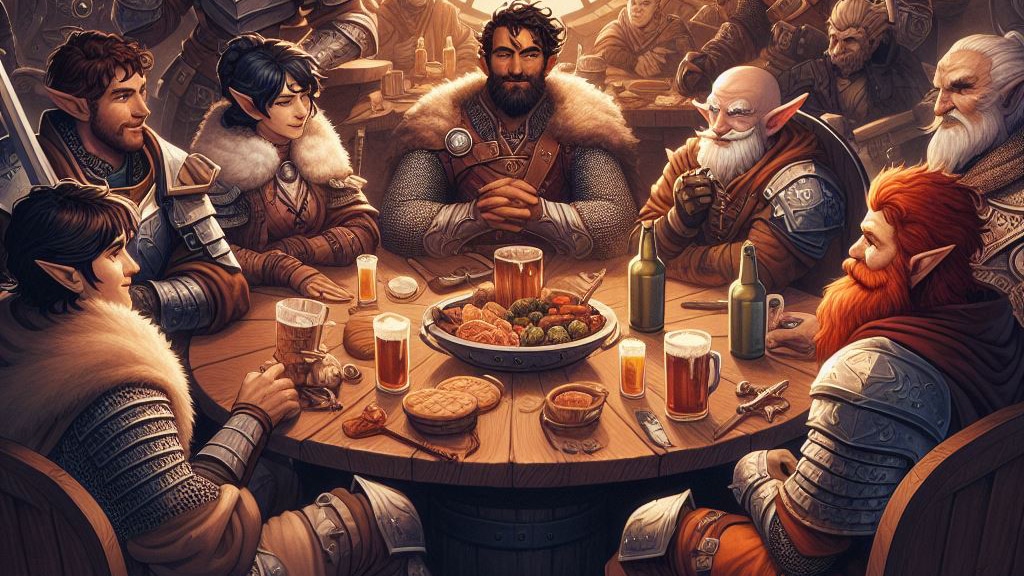
Fantasy serves as an emotional conductor, orchestrating the highs and lows, and infusing the narrative with tension and anticipation.
The misty mountain and the foreboding castle create an eerie, suspenseful atmosphere, heightening the reader’s senses as they accompany characters on their perilous ascent.
The bustling magical city, on the other hand, resonates with vibrancy and excitement, immersing the reader in the enchantment of a thriving metropolis.
This atmospheric resonance becomes a silent storyteller, evoking emotions that range from trepidation and wonder to awe and exhilaration, all within the immersive confines of the fantastical setting.
Moreover, the setting’s influence on mood and tension is dynamic and evolving.
As characters traverse through different landscapes—be they ominous, serene, majestic, or otherworldly—the atmosphere undergoes subtle shifts.
A journey from the misty mountain to an enchanted forest, for example, may transition the narrative from a sense of foreboding mystery to one of natural wonder.
The setting, in its role as an atmospheric conductor, ensures that the mood aligns seamlessly with the evolving stages of the epic journey.
Influencing Plot and Character Development
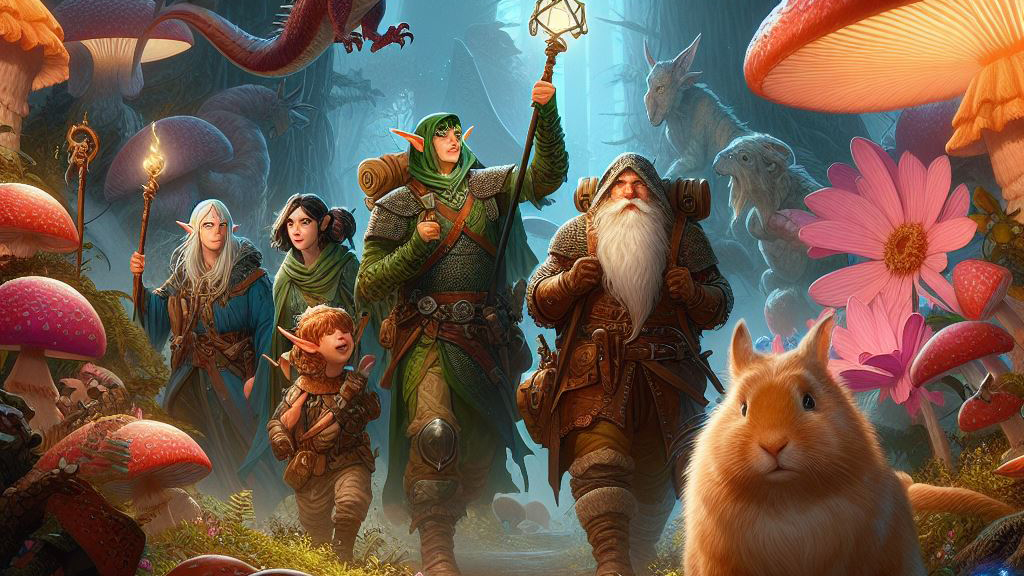
In epic fantasies, the settings transcend their traditional role as a backdrop; instead, emerging as a dynamic and active participant in the unfolding narrative.
Far from being a passive stage for characters to perform upon, the setting becomes a force that shapes the challenges characters encounter, influences their decisions, and propels the plot forward on an inexorable journey.
The challenges characters face are not arbitrary; they are born from the intricacies of the setting itself.
A character navigating through the dense thicket of an enchanted forest may grapple with magical creatures, mystical barriers, and elusive pathways.
In contrast, a journey across a barren wasteland may pit characters against harsh environmental conditions, scarcity of resources, and the haunting remnants of civilizations long forgotten.
The setting, thus, becomes an architect of adversity, demanding characters to adapt, strategize, and evolve in response to the unique challenges presented by their surroundings.
Moreover, the setting is a silent influencer of decisions, a backdrop that whispers suggestions and consequences into the ears of characters.
A sprawling, ancient city with labyrinthine alleys may prompt characters to make choices driven by the need for stealth and cunning, while a majestic castle atop a towering cliff may inspire acts of bravery and valor.
The dynamic interplay between the characters and their surroundings forges a symbiotic relationship, where decisions resonate with the essence of the setting and, in turn, are etched into the very landscape of the narrative.
As characters traverse the landscapes crafted by the setting, they embark on transformative journeys that are intricately linked to the world around them.
The lush, verdant meadows, the ominous mountain ranges, or the sprawling urban landscapes become crucibles of growth, challenging characters to confront their fears, question their beliefs, and discover latent strengths.
The setting becomes a mirror, reflecting the internal transformations of characters as they navigate the external challenges posed by the fantastical world they inhabit.
This dynamic interplay between setting, plot, and character development creates a reading experience that transcends mere observation; it becomes an immersive odyssey.
Readers don’t just witness the characters’ journeys; they feel the pulse of the world, breathe the air of the landscapes, and experience the transformative power of the setting.
The Importance of Consistency in World-Building
The allure of epic fantasy novels lies not just in their fantastical realms but in the meticulous craftsmanship of world-building that brings these expansive landscapes to life.
Creating Believable and Cohesive Worlds
At the heart of every epic fantasy novel is a world so vividly detailed that readers can almost reach out and touch its fantastical elements.
The key to achieving this immersive experience lies in the consistency of the world crafted by the author.
Consistency ensures that the geography, cultures, histories, and magical systems within the world adhere to a coherent set of rules.
When the elements of the world follow a logical and interconnected framework, readers are transported to a realm that feels not only fantastical but also believably real.
This authenticity is the bedrock upon which reader immersion is built, allowing them to suspend disbelief and fully engage with the unfolding narrative.
Balancing Innovation and Familiarity
Epic fantasy thrives on pushing the boundaries of imagination, introducing readers to concepts, creatures, and cultures beyond the confines of the everyday.
However, the challenge lies in striking a delicate balance between innovation and familiarity.
Consistency plays a pivotal role in this balancing act, ensuring that while authors introduce novel and groundbreaking elements, they remain grounded within the established rules of the world.
Readers seek the thrill of exploration in epic fantasy, but they also crave a sense of coherence that prevents the narrative from descending into chaos.
The delicate dance between the innovative and the familiar is where consistency shines, offering readers the excitement of the unknown within the safety of a familiar framework.
The Impact of Consistency on Reader Engagement
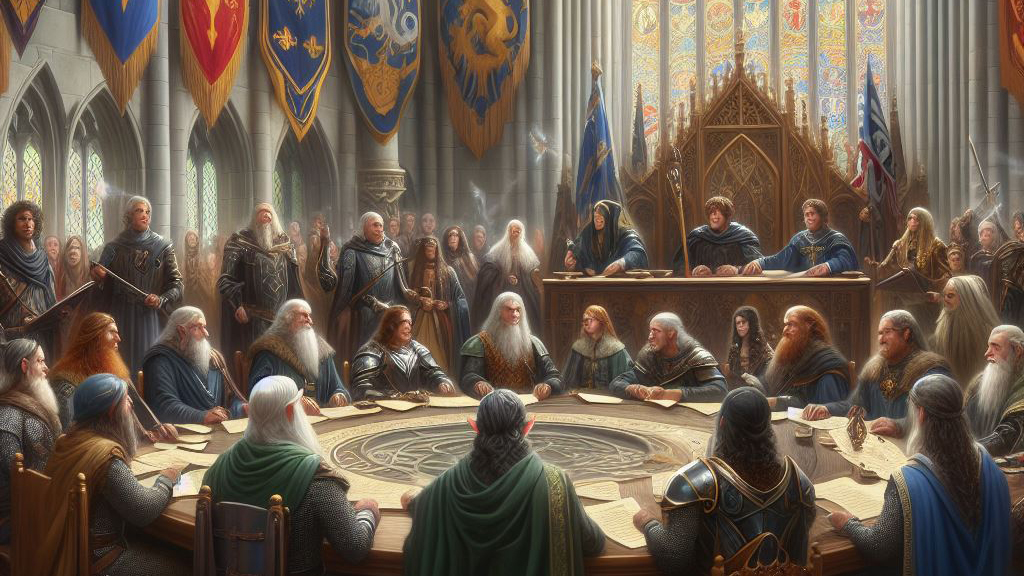
Consistency is not merely a technical aspect of world-building; it is a powerful catalyst for reader engagement.
A world that follows a consistent internal logic allows readers to invest emotionally in the narrative.
When the rules governing the world remain stable, readers can anticipate consequences, understand character motivations, and immerse themselves more deeply in the story.
Inconsistencies, on the other hand, disrupt this engagement, jarring readers out of the fantastical experience and diminishing the magic of the epic journey.
Thus, the impact of consistency on reader engagement is profound; it builds trust between the author and the reader, creating a bond that withstands the trials and tribulations of the narrative.
Cultural Diversity and Complexity in Epic Fantasy
Within the landscapes of epic fantasy, authors delve into the nuances of diverse cultures, races, and intricate social structures, navigating the delicate terrain of representation and weaving a rich narrative fabric that mirrors the complexity of the real world.
Developing Diverse Cultures and Races
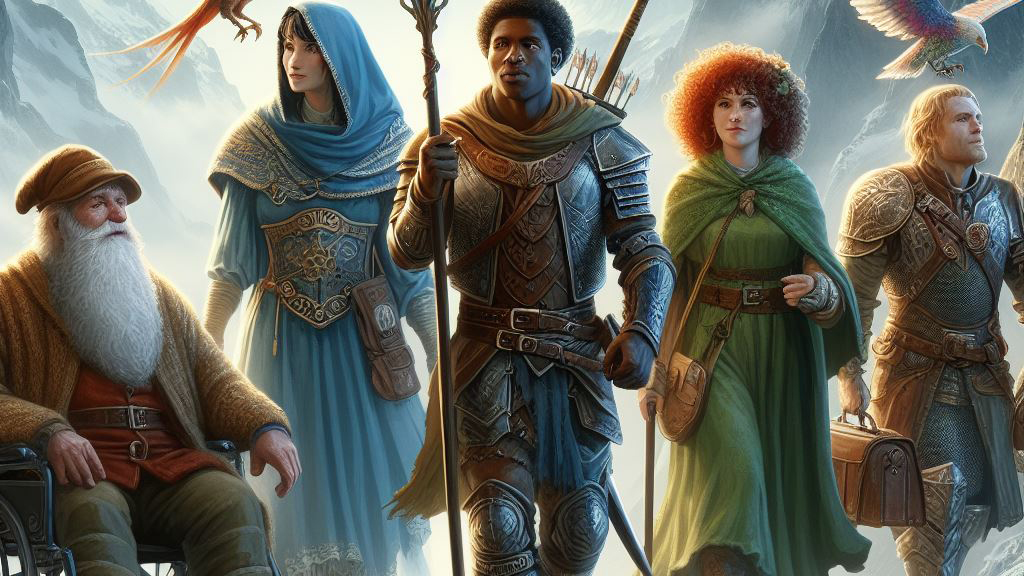
At the heart of this genre lies the opportunity to create worlds that transcend the limitations of our own.
Authors, akin to cultural architects, meticulously design diverse civilizations, each with its unique customs, languages, and traditions.
Whether it’s nomadic desert tribes, mystical forest societies, or sprawling urban metropolises, the cultivation of diverse cultures adds depth and vibrancy to the narrative.
The creation of various races, each with distinct characteristics, contributes to the multifaceted nature of these worlds.
From noble elves with an affinity for magic to hardy dwarves mining the depths of mountains, the diversity of races enriches the storytelling palette, providing readers with a kaleidoscope of characters and perspectives.
Addressing Issues of Representation
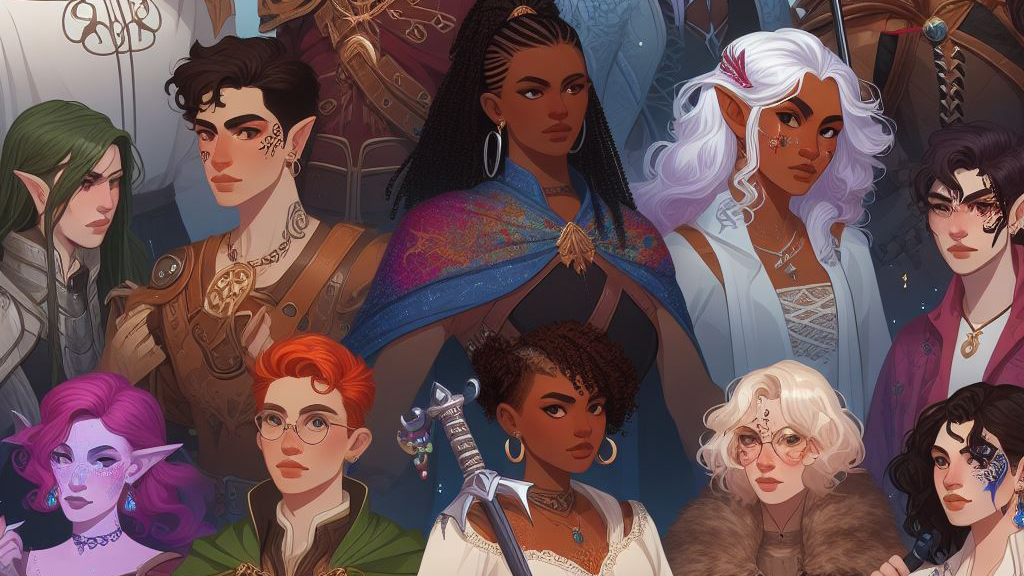
Addressing issues of representation has become a paramount consideration.
Epic fantasy, with its power to reflect and influence societal norms, stands at the forefront of this discourse.
Authors navigate the responsibility of representing a spectrum of identities, ensuring that characters reflect the diversity of the real world.
This conscious effort not only breaks away from traditional tropes but also fosters inclusivity, inviting readers from various backgrounds to see themselves within the pages of fantastical worlds.
By presenting characters of different genders, ethnicities, sexual orientations, and abilities, epic fantasy becomes a platform for promoting empathy, understanding, and the celebration of diverse experiences.
Exploring Social Structures and Hierarchies
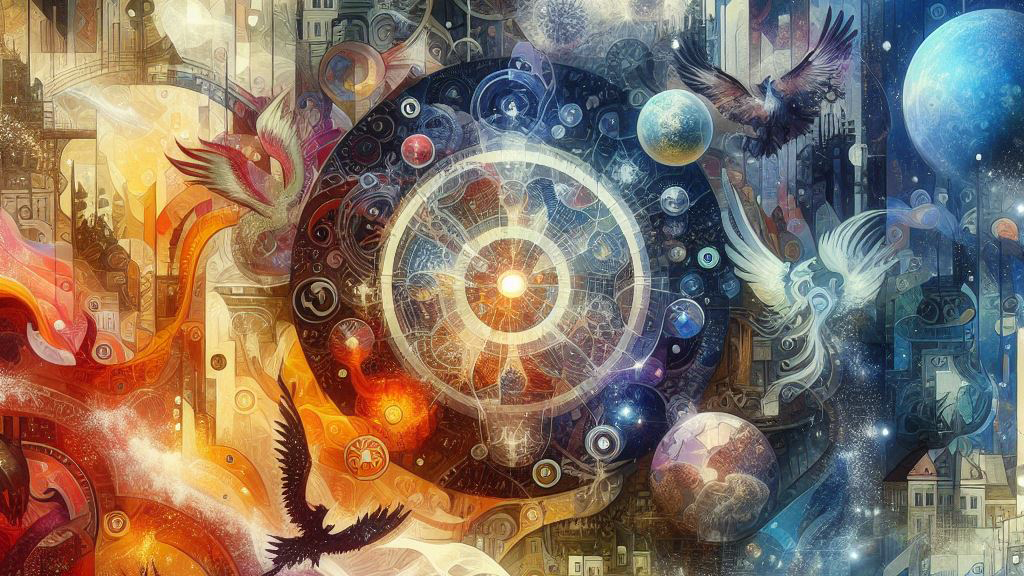
The complexity of epic fantasy worlds extends beyond surface-level diversity; it delves into the intricate web of social structures and hierarchies.
From feudal systems ruled by monarchies to egalitarian societies where leadership is earned, authors navigate the dynamics of power, privilege, and oppression.
The exploration of social hierarchies becomes a lens through which authors can scrutinize real-world issues, unveiling societal commentary within the fantastical.
As characters navigate these social structures, readers are prompted to reflect on themes of justice, inequality, and the dynamics that shape their own societies.
Cultural diversity and complexity emerge as crucial threads that elevate the narrative to new heights.
As authors craft worlds rich with diverse cultures and races, address issues of representation with sensitivity and awareness, and explore social structures and hierarchies, they create immersive realms that resonate with authenticity and relevance.
Navigating the Political Landscape
In fantasy the complexities of world-building extend beyond magical realms and mystical creatures.
At the heart of many narratives lies a web of political intrigue, power struggles, and factions vying for dominance.
Here, authors act as political architects, crafting intricate power dynamics, establishing complex political systems, and unraveling the profound influence of politics on the progression of the narrative.
Power Dynamics and Factions
Epic fantasy worlds, much like our own, are arenas where power is a coveted currency.
Authors create a tapestry of alliances, rivalries, and factions that shape the very fabric of the narrative.
Whether it’s warring noble houses, clandestine guilds, or ancient orders, the interplay of factions introduces layers of tension and conflict.
Characters navigate this political chessboard, facing moral dilemmas, forging alliances, and confronting adversaries whose motivations are often entwined with the broader power struggles of the world.
The intricacies of these power dynamics become a driving force, propelling characters and readers alike into a world where every decision holds the potential to shift the balance of power.
Intricate Political Systems
Beneath the surface of epic fantasy worlds lies a complex infrastructure of political systems, each with its own rules, traditions, and structures.
Monarchies ruled by divine right, republics where leaders are elected, or feudal systems governed by noble houses—all contribute to the political landscape.
Authors navigate the nuances of these systems, examining how power is wielded, contested, and distributed.
The establishment of political institutions, councils, and governing bodies adds depth to the narrative, immersing readers in the complexities of societal governance.
Characters, whether pawns or puppet masters, become entangled in the machinations of these systems, providing readers with a ringside seat to the unfolding political drama.
The Influence of Politics on Plot Progression
In fantasy, politics is not a mere backdrop but a force that shapes the trajectory of the narrative.
The decisions of rulers, the ambitions of factions, and the consequences of political maneuvering become integral components of the plot.
Political intrigue introduces layers of complexity, offering characters and readers alike a labyrinth of challenges and opportunities.
Betrayals, alliances, and the rise and fall of leaders become catalysts that propel the story forward.
The influence of politics is not confined to courtly dramas; it permeates every aspect of the narrative, influencing quests, battles, and the very destinies of the characters.
As the political landscape evolves, so too does the epic journey, creating a symbiotic relationship between the political machinations and the overarching plot.
Reader/Viewer Engagement with Epic Fantasy Worlds
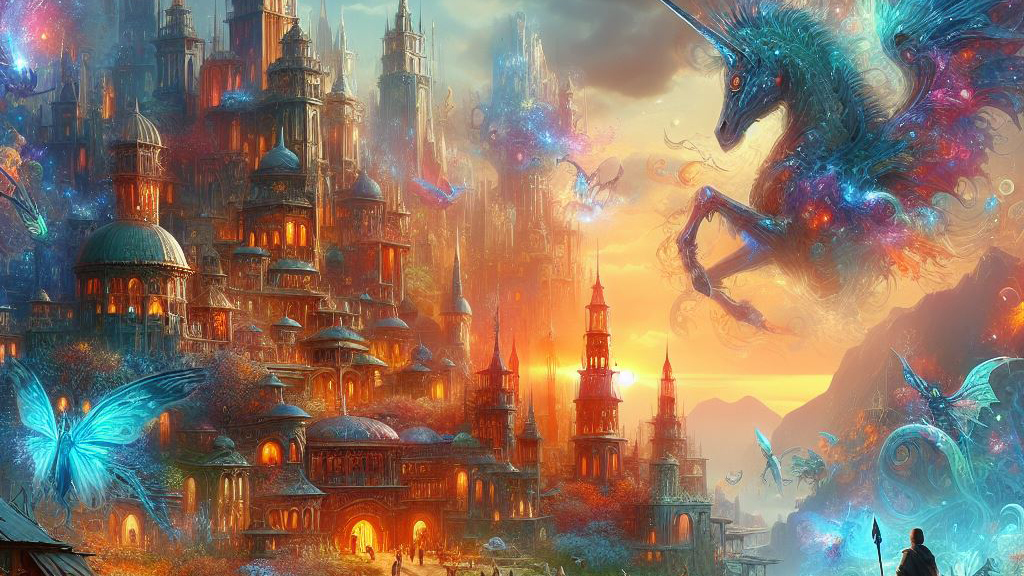
Epic fantasy worlds have a unique ability to captivate audiences, drawing readers and viewers into intricately crafted realms that defy the boundaries of our everyday reality.
Beyond the pages of books or the frames of screens, these worlds extend into the hearts and minds of those who immerse themselves in the narratives.
This article explores the dynamic and multifaceted engagement between audiences and epic fantasy worlds, delving into the ways in which readers and viewers are influenced, inspired, and actively contribute to the vibrant fan cultures and communities that surround these fantastical landscapes.
Immersive Escapism
Epic fantasy worlds serve as portals to escape the mundane and explore realms where magic, mythical creatures, and heroic quests abound.
Readers and viewers often engage with these worlds as a form of escapism, seeking refuge from the stresses of daily life.
The allure lies in the ability of these worlds to transport audiences to places where the impossible becomes possible and where the boundaries of imagination are pushed to their limits.
Identification and Empathy
One of the key factors driving engagement is the ability of epic fantasy worlds to provide a canvas for readers and viewers to project their own experiences, fears, and desires.
Characters, cultures, and conflicts within these worlds become mirrors reflecting aspects of the audience’s own journey.
This identification fosters a sense of empathy, creating a powerful connection between the audience and the fantastical elements of the narrative.
Fan Cultures and Fandoms
The engagement with epic fantasy worlds often extends beyond individual experiences to the formation of fan cultures and fandoms.
Enthusiastic readers and viewers come together to celebrate their shared love for a particular world or series.
These communities foster discussions, fan theories, and creative expressions such as fan art and fanfiction.
Social media platforms, conventions, and online forums serve as hubs for these vibrant fan cultures, allowing participants to connect with like-minded individuals from around the world.
Interactive Storytelling
With the rise of transmedia storytelling, epic fantasy worlds are no longer confined to a single medium.
Books, television series, movies, video games, and other forms of media contribute to a multi-platform narrative experience.
Audiences engage with these worlds through various mediums, each offering a unique perspective and contributing to the overarching narrative.
Interactive storytelling, particularly in the form of video games or immersive experiences, allows audiences to actively shape the course of the story, deepening their sense of investment and connection.
Epic Fantasy Influence on Popular Culture
Epic fantasy worlds have a significant impact on popular culture, influencing trends in literature, film, fashion, and even language.
Iconic elements from these worlds, such as fictional languages, mythical creatures, and memorable quotes, often permeate mainstream culture.
The enduring popularity of epic fantasy franchises has led to the normalization of once niche interests, making fantasy a pervasive and celebrated genre in contemporary entertainment.
Author-Audience Interaction
The relationship between authors and their audiences in the realm of epic fantasy is unique.
Through social media, book signings, and interviews, authors often engage directly with their readers, providing insights into their creative processes and expanding on the lore of their worlds.
This direct interaction further strengthens the bond between creators and consumers, fostering a sense of shared ownership over the worlds being explored.
Reader/viewer engagement with epic fantasy worlds is a dynamic and evolving phenomenon that goes beyond mere entertainment.
These immersive realms become a part of the audience’s identity, influencing their perceptions, values, and even their creative expressions.
As epic fantasy continues to evolve and expand, the engagement between audiences and these fantastical worlds will undoubtedly shape the future landscape of storytelling, community-building, and the ongoing celebration of the extraordinary within the realms of the fantastical.
Language and Communication in Fantasy Worlds
In fantasy literature, language serves as a powerful tool for world-building, shaping the very essence of cultures, characters, and the dynamics between them.
Constructing Languages
The creation of fictional languages, known as conlangs, is a distinctive aspect of world-building in fantasy.
Renowned linguists like J.R.R. Tolkien, who developed languages like Elvish, set the precedent for crafting intricate linguistic systems.
Contemporary authors, such as George R.R. Martin have continued this tradition, fashioning languages like Dothraki.
Or even in gaming, for instance, Dovahzul, is the dragon language featured in the popular video game Skyrim. The language is used by dragons, and players can learn and use words of power to unlock magical abilities.
.
Language as Cultural Identity
In fantasy worlds, language often serves as a key marker of cultural identity.
Diverse linguistic elements, including vocabulary, syntax, and pronunciation, distinguish various societies.
Authors strategically use linguistic nuances to reflect the values, traditions, and histories of different cultures, enriching the narrative with layers of cultural depth.
Impact on Characterization
The use of language extends beyond world-building; it becomes a powerful tool for character development.
A character’s choice of words, linguistic fluency, and use of idioms can convey their background, education, or even magical abilities.
Language becomes a lens through which readers can understand the complexities of characters within the fantasy world.
Magical and Mystical Languages
Fantasy worlds often feature languages imbued with magical properties.
Whether it’s the ancient incantations in Harry Potter or the mystical language of dragons in Eragon, these languages become conduits for magical forces.
The very act of speaking these languages can invoke spells, adding an extra layer of intrigue and mysticism to the narrative.
Communication Challenges
Fantasy worlds frequently explore the challenges of cross-cultural communication, much like in the real world.
Misunderstandings, linguistic barriers, and the nuances lost in translation can become central plot points.
These challenges create tension and propel characters into quests or diplomatic endeavors, highlighting the importance of effective communication in the fantasy realm.
Cultural Exchange and Diplomacy
Language plays a crucial role in the dynamics of cultural exchange and diplomacy within fantasy worlds.
Characters may need to learn new languages to form alliances or navigate unfamiliar territories.
The act of exchanging languages becomes symbolic of broader diplomatic efforts, reflecting the intricacies of forging connections between different civilizations.
Evolution of Language
Fantasy worlds provide authors with the opportunity to explore the evolution of language over time.
Ancient tongues, forgotten languages, and the development of new dialects can mirror the shifting landscapes of history within the fantasy realm.
This linguistic evolution becomes a narrative device for revealing the world’s past and predicting its future.
Reader Engagement
For readers, the inclusion of constructed languages enhances the immersive experience.
Learning snippets of a fantasy language or deciphering coded messages creates a sense of participation.
It transforms the act of reading into a collaborative effort, fostering a deeper connection between the audience and the intricacies of the fantasy world.
Language is a potent instrument that goes beyond mere communication.
It is a vehicle for cultural expression, a tool for character development, and a key element in the intricate dance of diplomacy and conflict.
Dynamic Characters Within Epic Worlds
Epic fantasy, a genre revered for its boundless imagination and intricate world-building, places characters at the forefront of extraordinary landscapes.
Authors within this genre are not only architects of fantastical realms but also sculptors of characters whose arcs intertwine with the very fabric of the world they inhabit.
This article unravels the complexity of character development, examining the interplay between character arcs and epic worlds, the profound influence of world-building on character motivations, and the delicate balance between character-driven and world-driven narratives.
Character Arcs in Relation to the World
In epic fantasy characters are not static entities; they are on transformative journeys that mirror the evolution of the worlds around them.
Character arcs, the trajectories of growth, change, and self-discovery, are intrinsically linked to the world in which they unfold.
Whether it’s a reluctant hero rising to the occasion or a villain succumbing to redemption, these arcs resonate with the dynamic shifts within the epic world.
The challenges, conflicts, and discoveries characters face become integral components of the narrative, creating a harmonious dance between character development and the ever-evolving landscapes they traverse.
How World-Building Shapes Character Motivations
Authors delve into the intricacies of world-building, considering how the geography, cultures, histories, and magical systems influence the characters’ desires and ambitions.
A character seeking to reclaim an ancient artifact may be driven by the historical significance embedded in the world’s lore.
Likewise, a nomadic wanderer may be motivated by the diverse cultures and landscapes encountered on their journey.
The fusion of character motivations with the elements of the world creates a narrative synergy, where the characters are not merely reacting to the environment but are products of the world’s influence.
Balancing Character-Driven and World-Driven Narratives
Epic fantasy narratives are a delicate equilibrium between characters who propel the story forward and worlds that unfold in response to their actions.
The balance between character-driven and world-driven narratives is an intricate dance, where characters navigate the challenges presented by the world, and, in turn, shape the destiny of the landscapes they inhabit.
Too much emphasis on characters can lead to a disconnected and static world, while an overly dominant world can overshadow the individual struggles and triumphs of the characters.
Authors strive for equilibrium, creating a synergy where character agency and world dynamics coalesce seamlessly, offering readers a reading experience that is both emotionally resonant and intellectually stimulating.
Gender Roles and Relationships in Epic Fantasy
Fantasy worlds, with their boundless potential for imagination, offer a unique space for exploring and challenging societal norms, including those related to gender roles and relationships.
In this article, we delve into the nuanced ways in which fantasy literature constructs, challenges, and redefines traditional gender roles, examining the impact on societal norms and the development of characters within these imaginative realms.
Constructing Gender Roles
Traditional gender roles often find their way into fantasy worlds, reflecting the cultural context from which the stories emerge.
The hero’s journey, a common narrative archetype, has historically centered around male protagonists, while female characters were relegated to supporting roles or archetypes like the damsel in distress.
These constructs reinforce established gender norms and expectations.
Challenging Stereotypes
Modern fantasy literature has increasingly become a platform for challenging gender stereotypes.
Authors are breaking away from conventional narratives, creating complex and multidimensional characters that defy traditional expectations.
Female protagonists are emerging as powerful warriors, leaders, and agents of change, challenging the notion that strength and heroism are exclusively male attributes.
Subverting Tropes
Fantasy worlds provide a playground for subverting gender tropes.
Authors are consciously steering away from the ‘chosen one’ narrative, where the hero is typically male, and are instead exploring narratives where female characters navigate their destinies with agency and strength.
By subverting these tropes, fantasy literature becomes a medium for breaking down ingrained societal expectations.
Exploring Diverse Relationships
Fantasy worlds are also expanding the portrayal of relationships beyond traditional heterosexual dynamics. LGBTQ+ representation is gaining prominence, contributing to the diversification of romantic and familial bonds within the narrative.
These depictions foster inclusivity and challenge heteronormative expectations that have historically dominated literature.
Impact on Societal Norms
The portrayal of gender roles in fantasy literature has a ripple effect on societal norms.
As readers and viewers immerse themselves in diverse and unconventional narratives, they are exposed to alternative perspectives on gender.
This exposure, in turn, influences societal attitudes, contributing to a more inclusive and accepting cultural landscape.
Character Development and Agency
The evolution of characters within fantasy worlds mirrors the changing attitudes towards gender roles.
Characters are granted agency and the ability to shape their destinies irrespective of gender.
This agency not only contributes to a more engaging narrative but also serves as a reflection of the ongoing conversations about empowerment, autonomy, and equality in the real world.
Intersectionality in Epic Fantasy
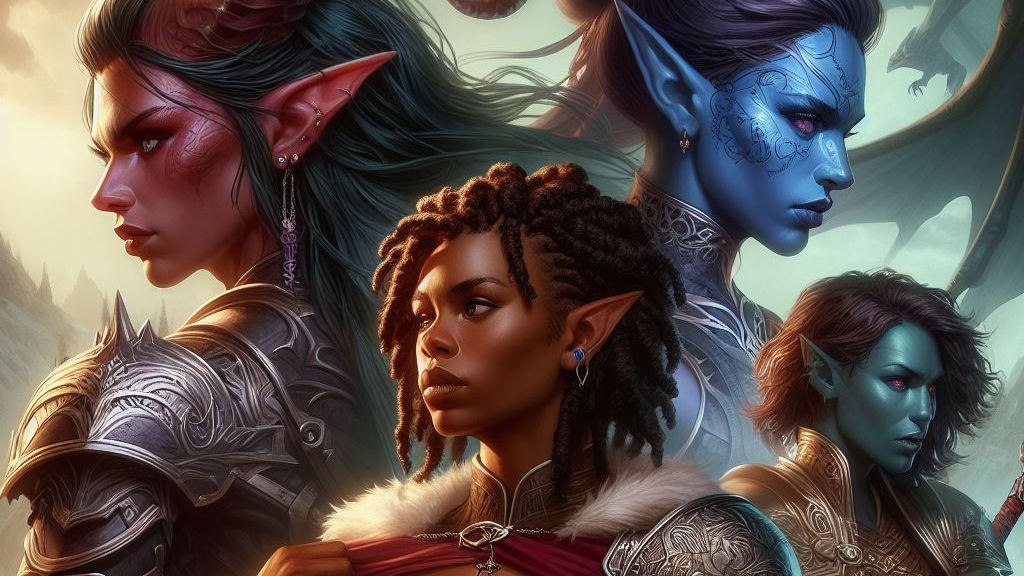
Fantasy worlds are increasingly incorporating intersectional perspectives, acknowledging that gender is just one aspect of a character’s identity.
This intersectionality allows for more nuanced explorations of characters who navigate multiple facets of their identity, such as race, class, and abilities, intersecting with gender in complex ways.
Gender roles and relationships are pivotal aspects that influence both the narrative landscape and societal perceptions.
As authors continue to deconstruct traditional stereotypes and construct more inclusive worlds, fantasy literature becomes a mirror reflecting the evolving understanding of gender in our own society.
By challenging norms, subverting tropes, and fostering diverse relationships, fantasy worlds contribute to a cultural shift towards more equitable and progressive perspectives on gender roles and relationships.
Challenges and Pitfalls in Epic Fantasy World-Building
Epic fantasy, with its vast realms and intricate lore, offers authors an expansive canvas to create awe-inspiring worlds.
Yet, within this boundless imagination lies the challenge of world-building—a delicate craft that demands finesse to avoid common pitfalls.
From steering clear of clichés and tropes to managing the delicate balance between detail and reader engagement, authors must navigate these perils to ensure their fantastical realms captivate rather than overwhelm.
Avoiding Clichés and Tropes
The allure of fantasy often lies in its ability to transport readers to uncharted territories.
However, the temptation to rely on clichés and tropes is a peril that authors must consciously avoid.
From the reluctant hero to the dark lord threatening the world, these overused elements can diminish the uniqueness of the world.
Authors must strive for originality, infusing their worlds with fresh perspectives and unexpected twists that defy the conventions of traditional fantasy storytelling.
By steering away from clichés, authors create narratives that surprise and captivate, offering readers an immersive experience that transcends the predictable.
Managing Information Overload
One of the greatest challenges in epic fantasy world-building is the risk of information overload.
The desire to share every intricate detail of the world’s history, cultures, and magical systems can lead to overwhelming the reader.
Authors must tread carefully, revealing information organically rather than bombarding readers with a deluge of details.
By weaving essential information into the narrative at opportune moments, authors can maintain a delicate balance, ensuring that the richness of the world unfolds gradually, allowing readers to absorb and appreciate the complexity without feeling drowned in an excess of data.
Balancing Detail with Reader Engagement
While the devil is in the details, an excess of intricacies can lead to a different peril—reader disengagement.
Finding the right balance between providing enough detail to create a vivid world and keeping the narrative pace engaging is a tightrope that authors must walk.
Too much detail can bog down the story, while too little can leave readers feeling disconnected from the world.
Authors must consider the narrative flow, introducing details strategically to enhance rather than detract from the reader’s engagement.
This delicate dance ensures that readers are not just spectators but active participants in the immersive experience of the fantastical realm.
Comparative Study of Epic Fantasy Across Cultures
Epic fantasy, as a genre, transcends geographical boundaries, weaving tales of magic, heroes, and mythical landscapes that resonate with audiences worldwide.
However, the interpretation and creation of these fantastical narratives are profoundly influenced by the rich tapestry of cultural backgrounds from which they emerge.
Cultural Mythology and Folklore
Cultural mythology and folklore serve as the foundation upon which epic fantasy worlds are built.
The narrative elements, characters, and magical systems often draw inspiration from the myths and legends specific to each culture.
For example, Western fantasy may feature knights and dragons rooted in medieval European mythology, while Eastern fantasy might incorporate creatures and themes from Asian folklore.
Philosophical Underpinnings
The philosophical outlook of a culture plays a significant role in shaping the themes and moral dilemmas presented in epic fantasy.
Western fantasy, deeply influenced by Judeo-Christian traditions, often explores themes of good versus evil, redemption, and the hero’s journey.
In contrast, Eastern fantasy, drawing from philosophies such as Taoism or Buddhism, may emphasize the cyclical nature of existence, balance, and the interconnectedness of all things.
Magical Systems and Supernatural Entities
The depiction of magic and supernatural entities in epic fantasy is closely tied to cultural beliefs and traditions.
In Western fantasy, magic systems might be based on medieval alchemy or occult practices, while Eastern fantasy may feature elements of chi manipulation or spiritual energy.
The types of supernatural beings, whether they are elves, spirits, or gods, are often rooted in cultural mythologies and religious beliefs.
Heroic Archetypes and Cultural Heroes
Heroic archetypes vary across cultures, and the portrayal of heroes in epic fantasy reflects these cultural distinctions.
The lone, valiant knight might be a prevalent Western archetype, while Eastern fantasy may celebrate collective heroism or feature protagonists embodying the ideals of a particular cultural hero.
World-Building Aesthetics
The aesthetic elements of epic fantasy worlds, including architecture, clothing, and landscapes, are influenced by the cultural aesthetics of the societies that inspire them.
Whether it’s the Gothic spires of Western castles or the intricate pagodas of Eastern realms, these visual cues contribute to the immersive nature of the narrative.
Narrative Structure and Storytelling Techniques
The narrative structure and storytelling techniques employed in epic fantasy are deeply rooted in cultural storytelling traditions.
Western fantasy often follows a linear structure with a clear distinction between good and evil, while non-Western fantasy might embrace more cyclical or nonlinear storytelling, reflecting diverse cultural approaches to narrative construction.
Interpreting Symbolism and Allegory
Symbolism and allegory in epic fantasy are open to interpretation, and cultural context plays a crucial role in how audiences perceive and resonate with these layers of meaning.
Symbols, such as mythical creatures or magical artifacts, may carry different cultural significance, adding layers of depth to the narrative.
From the mythological foundations to the storytelling techniques and philosophical themes, epic fantasy serves as a canvas on which cultures paint their unique narratives.
As creators and audiences continue to explore the boundaries of epic fantasy, the genre’s capacity to bridge cultures and foster cross-cultural understanding becomes increasingly evident, enriching the global tapestry of fantastical storytelling.
The Evolving Landscape of Epic Fantasy
Epic fantasy is not static.
It evolves, mirroring the ever-changing landscape of our own world.
From contemporary trends shaping the genre to the profound influence of cultural and societal changes, we unravel the dynamic forces at play and look toward the future of epic fantasy.
Trends in Contemporary Epic Fantasy
The current landscape of epic fantasy is marked by a diverse tapestry of themes and styles.
Traditional tropes are being reimagined, subverted, and expanded upon.
Grimdark fantasy, characterized by morally gray characters and gritty realism, has gained prominence, challenging the classic dichotomy of heroes and villains.
Moreover, there is a growing emphasis on inclusivity, with authors incorporating diverse perspectives, cultures, and mythologies, reflecting a broader, more inclusive worldview.
Contemporary epic fantasy is not confined by rigid boundaries but embraces a spectrum of subgenres and narrative structures, offering readers a kaleidoscope of fantastical possibilities.
Influence of Cultural and Societal Changes
Epic fantasy is not immune to the influences of the world it inhabits.
Cultural and societal changes reverberate through the genre, shaping narratives and characters.
Authors are increasingly drawing inspiration from a global array of mythologies and histories, enriching their worlds with diverse influences.
Themes of identity, representation, and socio-political commentary are woven into the fabric of epic fantasy, reflecting a broader awareness of societal issues.
As readers seek narratives that resonate with their evolving perspectives, epic fantasy becomes a dynamic mirror reflecting the complexities of our contemporary world.
Looking Toward the Future
The future of epic fantasy holds the promise of even greater diversity and innovation.
As technology advances and communication barriers dissolve, authors have unprecedented access to global storytelling traditions.
The boundaries between genres blur, giving rise to hybrids that defy easy categorization.
Climate change, technological advancements, and philosophical inquiries seep into the realms of epic fantasy, offering fertile ground for exploration.
The future may witness a continued expansion of perspectives, with authors pushing the boundaries of what constitutes the fantastical.
Epic fantasy, while rooted in tradition, becomes a vessel for envisioning futures that transcend the limitations of the present.
Technological Development in Epic Fantasy Worlds
Technological development in fantasy worlds serves as a fascinating and multifaceted element that significantly influences the fabric of these imaginary realms.
Whether these worlds are marked by advanced magical technologies or characterized by a lack of conventional technology, the impact on societies, cultures, and plotlines is profound and varied.
Societal Structure:
In fantasy settings where advanced technology is prevalent, societies often reflect the division between those who control and harness the technology and those who do not.
This can lead to hierarchical structures and power imbalances, as those with technological prowess wield significant influence.
Conversely, in worlds where technology is scarce or nonexistent, societal structures might be based on magical abilities, divine favor, or other mystical elements.
This can create a more mystical and enchanting atmosphere, where individuals’ roles are determined by their magical prowess rather than technological expertise.
Cultural Dynamics
The presence or absence of technology in fantasy worlds shapes cultural norms and values.
Advanced technological societies may prioritize progress, innovation, and efficiency, while less technologically advanced cultures may emphasize tradition, mysticism, and spirituality.
The development of unique cultural practices, rituals, and belief systems often arises from the interaction between magic and technology.
This interplay can lead to the emergence of new schools of thought, religious movements, or even conflicts rooted in the clash of these fundamental forces.
Economic Systems
Fantasy worlds with advanced technology might showcase vibrant economies driven by magical industries, where enchanted artifacts or magical devices are traded as valuable commodities.
This can lead to economic disparities and power struggles over control of magical resources.
In contrast, worlds with limited technology might rely on more traditional forms of commerce, such as bartering or resource-based economies.
The scarcity of magical resources may drive quests or conflicts centered around obtaining these rare and coveted elements.
Plot Dynamics
Technological development serves as a dynamic catalyst for plot progression.
In worlds with evolving technology, conflicts may arise from the misuse of powerful magical artifacts, the quest for groundbreaking inventions, or the unintended consequences of magical experimentation.
Conversely, stories set in worlds without advanced technology may focus on the quest for ancient relics, the unlocking of dormant magical abilities, or the struggle to resist encroaching dark forces that seek to exploit the lack of technological defenses.
Environmental Impact
The level of technological development in a fantasy world can also impact its environment.
Advanced magical technologies might result in the exploitation of magical resources, leading to environmental degradation and the need for conservation efforts.
Conversely, worlds without extensive technology may showcase a more pristine and mystical environment, with magical creatures and natural wonders playing a central role in the narrative.
Technological development, or the lack thereof, is a versatile and rich aspect of world-building in epic fantasy settings.
It not only shapes the physical landscape and capabilities of the inhabitants but also forms the foundation for intricate societal structures, cultural nuances, and captivating plotlines that make these fantastical realms come alive for readers and audiences.
Religious Beliefs and Systems
Religious beliefs and systems play a pivotal role in shaping the tapestry of epic fantasy worlds, providing a rich source of cultural depth, moral frameworks, and plot dynamics.
In these imaginary realms, the presence of gods, mythical entities, and revered doctrines often permeates every aspect of society, influencing the behaviors and motivations of characters.
Cultural Foundation
Religious beliefs often form the cornerstone of a fantasy culture, influencing everything from social norms to moral values.
The pantheon of gods, creation myths, and religious rituals define the cultural identity of various societies within the fantasy world.
Different races or civilizations may have distinct pantheons, each with its own set of deities and stories that shape the way people perceive their world and their place in it.
Moral Compass and Ethics
Religious doctrines provide a moral compass for individuals and societies, dictating what is considered right or wrong.
Characters in epic fantasy often grapple with moral dilemmas rooted in their faith, leading to internal conflicts and external challenges.
The clash of belief systems between different cultures can be a driving force for conflict, as characters navigate the complexities of morality and ethics shaped by their respective religions.
Ceremonies and Rituals
Religious ceremonies and rituals are integral to the fabric of fantasy cultures.
These events can mark important milestones in a character’s life, such as birth, coming of age, marriage, and death.
The performance of rituals often has magical or spiritual significance, tying the characters to the supernatural elements of their world.
Quests or plotlines may revolve around the fulfillment of religious prophecies or the performance of sacred rites, adding a layer of mysticism and urgency to the narrative.
Divine Intervention and Prophecy
The belief in divine intervention and prophecies frequently shapes the destinies of characters.
The gods or higher powers may guide or manipulate events, leading characters on epic quests or influencing the outcomes of battles.
Characters might grapple with questions of fate and free will as they navigate the prophecies foretold by seers or divine beings, adding a sense of inevitability or unpredictability to the unfolding plot.
Cultural Conflict and Cooperation
Religious differences can be a source of both conflict and cooperation in epic fantasy worlds.
Wars may erupt over opposing religious ideologies, or alliances may form among cultures that share similar belief systems.
Characters may find themselves caught in the crossfire of religious disputes, leading to complex relationships and alliances that shape the political landscape of the fantasy world.
Cults and Heresies in Fantasy
Within fantasy societies, cults and heretical movements can emerge, challenging the established religious order.
Characters may be drawn into the secretive world of cults or become heretics themselves, facing persecution or embarking on quests to uncover forbidden truths.
The existence of forbidden knowledge or forbidden magic often ties into religious themes, creating an atmosphere of mystery and danger.
Redemption and Atonement
Characters in epic fantasy frequently undergo journeys of redemption or atonement influenced by their religious beliefs.
The quest for forgiveness or the need to reconcile with one’s faith can be a powerful motivator, driving characters to undertake heroic deeds or confront their darkest sins.
The interplay of religious beliefs and systems in epic fantasy serves as a dynamic force that shapes the cultures, values, and destinies of characters.
Whether exploring the divine realms, navigating moral quandaries, or unraveling prophecies, the presence of religion adds layers of complexity to the fantasy narrative, making it a crucial element in the world-building process.
Examining Notable Epic Fantasy Worlds in Literature
Epic fantasy, as a genre, is renowned for its ability to transport readers to otherworldly realms filled with magic, adventure, and intricate lore.
These fantastical landscapes, meticulously crafted by imaginative authors, serve as the backdrop for epic tales that capture the imagination.
1. Middle-earth (J.R.R. Tolkien)
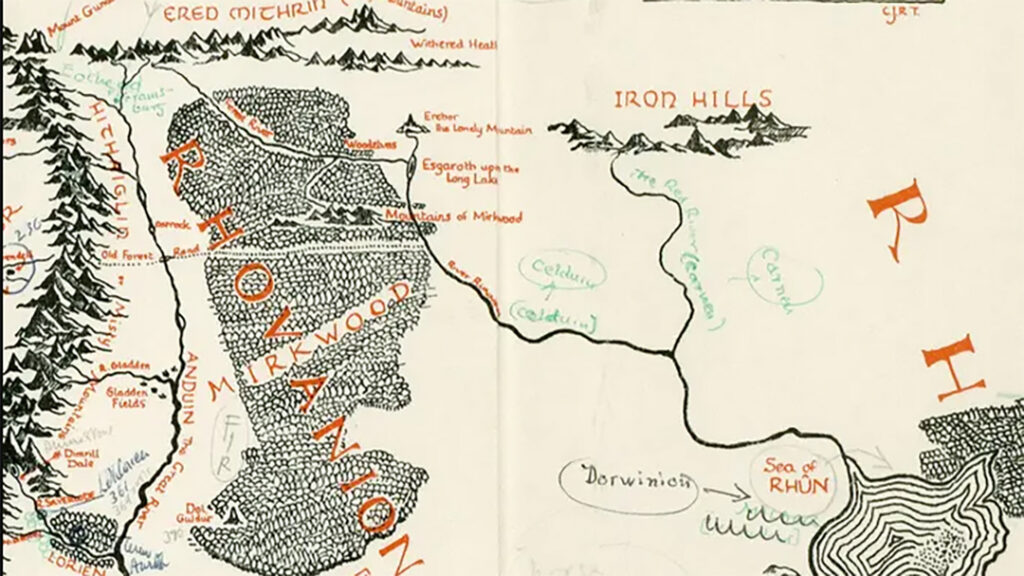
No examination of epic fantasy worlds is complete without a journey to Middle-earth, a realm of unparalleled depth and richness that has become synonymous with the genre itself.
Created by the visionary J.R.R. Tolkien, this sprawling setting serves as the majestic stage for two of the most iconic works in literature, The Lord of the Rings and The Hobbit.
Tolkien’s brilliance lies not only in the grandeur of his imagination but in the meticulous detail with which he crafted every corner of Middle-earth.
The journey begins in the serene beauty of the Shire, an idyllic homeland of hobbits where lush green hills, cozy hobbit holes, and meandering rivers create an image of pastoral perfection.
Tolkien’s ability to infuse ordinary landscapes with extraordinary charm sets the tone for the epic odyssey that unfolds.
As the narrative unfolds, readers are transported across the varied landscapes of Middle-earth, each exquisitely described and uniquely characterized.
The ancient, mystical woods of Lothlórien with its towering mallorn trees, the ethereal beauty of Rivendell nestled amid the Misty Mountains, and the foreboding peaks of Mordor shrouded in darkness—all evoke a sense of wonder and awe.
Tolkien’s descriptive prowess not only paints vivid pictures but also breathes life into the very essence of each location.
The Shire, Rivendell, and Mordor are not just physical settings; they are reflections of the diverse cultures, histories, and mythologies that inhabit Middle-earth.
The rich tapestry of languages, races, and civilizations woven into the fabric of this fictional world adds layers of authenticity and complexity.
Tolkien’s creation is not merely a backdrop; it’s a living, breathing entity that shapes the destinies of its inhabitants.
Furthermore, Middle-earth is a world deeply embedded with themes that resonate on a profound level.
The struggle between good and evil, the hero’s journey, the importance of friendship and fellowship—all find their manifestation in the geography and cultures of Middle-earth.
Tolkien’s world-building transcends the physical landscape; it becomes a mirror reflecting the timeless aspects of the human condition.
Tolkien’s influence reverberates through generations of fantasy authors who, inspired by his unparalleled achievement, aspire to create worlds that are equally immersive and enchanting.
Middle-earth serves as a benchmark, a standard against which other epic fantasy worlds are measured.
The intricate relationships between landscapes, cultures, and characters within Middle-earth have become a blueprint for crafting cohesive and resonant fictional universes.
Middle-earth is more than a setting; it’s a masterpiece of literary geography—a testament to the enduring legacy of a creator who dared to dream on an epic scale.
2. Westeros (George R.R. Martin)
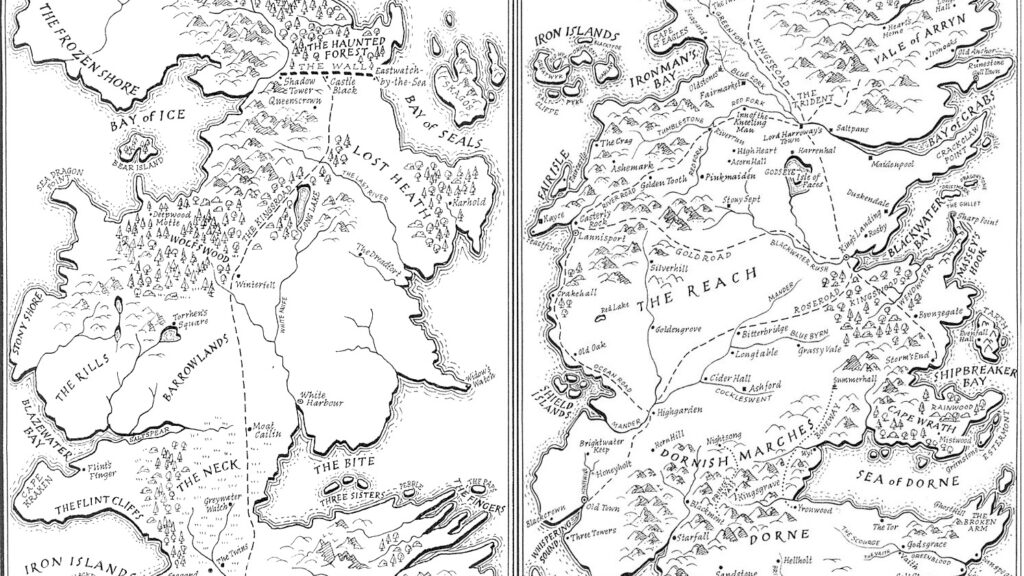
The vast and politically charged landscape of Westeros, as brought to life by the masterful storytelling of George R.R. Martin in his A Song of Ice and Fire series, stands as a testament to the complexity and unpredictability of epic fantasy realms.
A realm marked by intrigue, power struggles, and unforeseeable twists, Westeros has become a hallmark in the genre, captivating readers and viewers alike, especially through the acclaimed Game of Thrones adaptation.
At the heart of Westeros lies the coveted Iron Throne, a symbol of power and authority.
This iconic seat of rulership becomes a focal point around which the intricate political dance unfolds.
The struggle for control of the Iron Throne is not just a battle of armies; it’s a web of alliances, betrayals, and strategic maneuvering that spans the Seven Kingdoms.
George R.R. Martin, with unparalleled narrative finesse, weaves a tapestry of conflicting ambitions, moral ambiguities, and shifting allegiances.
The Wall, a colossal ice structure guarding the northern frontier of Westeros, adds an element of mystique and danger to the realm.
Beyond the Wall lies a vast, untamed wilderness inhabited by enigmatic creatures and ancient mysteries.
The Wall becomes a metaphorical and physical barrier, highlighting the ever-present threat that looms over the continent and setting the stage for epic conflicts between the living and the supernatural.
Westeros is further enriched by its diverse array of noble houses, each with its own history, traditions, and internal dynamics.
From the honorable Starks of the North to the cunning Lannisters of the West, these houses bring a wealth of characters and perspectives to the narrative.
The power struggles between the houses, often fueled by generations-old rivalries and personal vendettas, inject Westeros with a level of complexity that mirrors the intricacies of real-world politics.
The Game of Thrones adaptation, which brought Westeros to television screens worldwide, amplified the impact of Martin’s creation.
The visual spectacle, combined with exceptional character portrayals and dramatic storytelling, propelled Westeros into popular culture.
The Iron Throne, the Wall, and the sigils of noble houses became iconic symbols, instantly recognizable to fans and newcomers alike.
Moreover, Westeros serves as a stage for exploring themes that transcend the fantasy genre—themes of power, morality, the consequences of war, and the fragile nature of alliances.
The characters, deeply embedded in the fabric of this politically charged realm, navigate moral gray areas, face moral dilemmas, and grapple with the harsh realities of a world where no one is truly safe.
Through intricate plots, diverse cultures, and a cast of complex characters, Westeros captivates readers with its layers of intrigue, power struggles, and unpredictable twists.
1. A Game of Thrones

In the inaugural book, A Game of Thrones, Westeros serves as the battleground for political machinations among noble houses vying for the Iron Throne.
From the icy expanse beyond the Wall to the arid lands of Dorne, the geographical diversity of Westeros is unveiled.
The Wall, an ancient and foreboding structure, introduces readers to the supernatural threats that lurk in the northern reaches of the realm.
2. A Clash of Kings

A Clash of Kings expands the scope of Westeros, introducing new regions and characters.
The Iron Islands and the city of Qarth showcase the maritime and exotic aspects of the world.
The War of the Five Kings unfolds, revealing the intricate power dynamics between the noble houses.
The Red Comet becomes a celestial omen, emphasizing the interconnectedness of celestial events with the fate of the realm.
3. A Storm of Swords

A Storm of Swords thrusts Westeros into the chaos of war and shifting alliances.
The introduction of the Free Folk and the wildlings adds complexity to the geopolitical landscape.
The infamous Red Wedding becomes a watershed moment, demonstrating the brutal consequences of political betrayal. Westeros, in this installment, is a world marked by bloodshed, loyalty, and the unpredictable nature of power.
4. A Feast for Crows

A Feast for Crows takes readers deeper into the aftermath of war, exploring the consequences on both the individual and societal levels.
New perspectives from Dorne and the Iron Islands provide fresh insights into the cultural diversity of Westeros.
The narrative weaves together the struggles for power and survival in a realm profoundly affected by past conflicts.
5. A Dance with Dragons

A Dance with Dragons introduces readers to the lands beyond Westeros, showcasing the exotic and untamed regions of Essos.
Daenerys Targaryen’s journey across Slaver’s Bay and the mysterious city of Meereen expands the scope of the world.
The Wall becomes a focal point for both political intrigue and supernatural threats, emphasizing the convergence of various storylines across the vast expanse of Westeros.
Throughout the series, Martin enhances the epic nature of Westeros by incorporating rich lore and history.
The tales of the Age of Heroes, the Targaryen conquest, and the events at Harrenhal add temporal depth to the world.
Westeros is not merely a backdrop; it is a realm shaped by centuries of conflicts, alliances, and the ebb and flow of power.
The series unfolds a tapestry of geopolitical complexity, cultural diversity, and moral ambiguity.
The shifting dynamics of power, the exploration of moral themes, and the unpredictable twists contribute to Westeros’s enduring legacy as a captivating and multifaceted epic fantasy realm.
3. Narnia (C.S. Lewis)
C.S. Lewis, a literary maestro and a philosopher in his own right, opens the door to an extraordinary realm through the magical wardrobe in The Chronicles of Narnia series.
Narnia, the enchanting world beyond the wardrobe, is a testament to Lewis’s unparalleled ability to blend fantastical elements with profound explorations of moral and spiritual themes.
Narnia is not merely a backdrop for the adventures of its young protagonists; it is a living, breathing entity with its own history, mythology, and a unique cosmology.
From the lamppost in the snow-covered woods to the regal splendor of Cair Paravel, each corner of Narnia is imbued with a sense of wonder and magic.
Talking animals, mythical creatures, and ancient prophecies add layers of complexity to this fantastical land, creating an immersive experience that resonates with readers of all ages.
Central to the allure of Narnia is the epic struggle between good and evil that unfolds within its borders.
Lewis skillfully weaves moral and spiritual allegories into the fabric of Narnia, using the land and its inhabitants as metaphors for timeless virtues and vices.
The White Witch, a symbol of malevolence and tyranny, stands in stark contrast to the noble and virtuous Aslan, the great lion and true king of Narnia.
Through these characters and their interactions, Lewis explores themes of sacrifice, redemption, and the triumph of good over evil.
The richness of Narnia lies not only in its magical elements but also in the allegorical layers that invite readers to contemplate deeper meanings.
Aslan’s sacrificial journey echoes religious motifs, drawing parallels to the Christ-like figure who willingly lays down his life for the salvation of others.
The wardrobe itself becomes a threshold between the mundane and the miraculous, symbolizing the transformative power of faith and belief in the extraordinary.
Beyond its fantastical trappings, Narnia serves as a canvas for the exploration of profound moral lessons.
The Pevensie siblings, the primary human protagonists, undergo transformative journeys within Narnia that mirror the challenges and triumphs of the human spirit.
Each adventure becomes a moral fable, imparting timeless wisdom about courage, resilience, and the enduring power of hope.
Narnia’s universality is a key factor in its enduring appeal. Lewis, drawing inspiration from various mythologies and folklore, crafted a world that transcends cultural boundaries.
The moral dilemmas faced by the characters in Narnia are universally relatable, making the series a timeless and accessible treasure trove of wisdom for readers of diverse backgrounds.
The Chronicles of Narnia stands as a magnum opus in the realm of epic fantasy literature.
Through seven enchanting books, Lewis invites readers into the fantastical world of Narnia, a realm teeming with talking animals, mythical creatures, and epic battles between forces of good and evil.
Each book in the series unveils a different facet of Narnia, contributing to the rich tapestry of an epic fantasy world that transcends the boundaries of imagination.
1. The Lion, the Witch and the Wardrobe
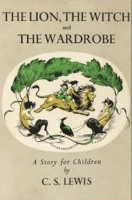
The journey begins with The Lion, the Witch and the Wardrobe, where the Pevensie siblings stumble upon Narnia through a magical wardrobe.
Narnia, in this inaugural adventure, is under the icy grip of the White Witch, and the majestic lion Aslan emerges as the beacon of hope.
From the frozen landscape of the Witch’s realm to the sprawling battlefield of the climactic battle, Narnia is introduced as a realm where the forces of good and evil clash in an epic struggle.
2. Prince Caspian

In Prince Caspian, Narnia has aged, and the once-thriving land is now ruled by Telmarines.
The ancient trees of the Old Narnia have become silent, and mythical creatures are rare.
The narrative explores themes of restoration and resilience as the Pevensies, alongside the young Prince Caspian, embark on a quest to revive the true spirit of Narnia.
The epic journey takes them through dense forests, forgotten ruins, and across treacherous terrains.
3. The Horse and His Boy

The Horse and His Boy offers a glimpse into the southern realms of Narnia, introducing the Calormene Empire and the vast desert landscapes.
Shasta’s journey from the city of Tashbaan to the lush meadows of Narnia illustrates the geographical diversity of this epic world.
From bustling cities to hidden oases, the journey emphasizes Narnia’s role as a vast and varied landscape, ready to surprise and enchant.
4. The Silver Chair

Deep beneath the earth, Narnia takes on a subterranean form in The Silver Chair.
Journeying through the Underland, readers encounter the mysterious and perilous realm of the Lady of the Green Kirtle.
The journey highlights the fantastical depths of Narnia, showcasing that its wonders extend beyond the surface and into hidden realms filled with magic, danger, and unexpected allies.
5. The Voyage of the Dawn Treader

The Voyage of the Dawn Treader sails beyond Narnia’s mainland to explore the Eastern Ocean.
From the Lone Islands to the End of the World, the voyage introduces readers to uncharted territories and mythical islands.
The journey captures the spirit of exploration and showcases Narnia’s position as a world with horizons that extend beyond the familiar, offering new wonders and challenges.
6. The Magician’s Nephew

In the prequel The Magician’s Nephew, readers witness the creation of Narnia itself.
The Wood Between the Worlds serves as a cosmic nexus connecting different realms, emphasizing the interconnectedness of Lewis’s fantasy universe.
The birth of Narnia is depicted as a majestic event, cementing the world’s status as a mythical and magical realm with a rich and storied history.
7. The Last Battle
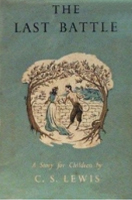
The final installment, The Last Battle brings Narnia to its apocalyptic end.
The narrative transcends the physical realm, delving into the metaphysical as the characters enter Aslan’s Country.
This culmination reinforces Narnia’s status as an epic fantasy world that exists not only as a physical space but also as a realm with profound spiritual dimensions.
Through diverse landscapes, mythical creatures, and moral allegories, Lewis crafted Narnia as a realm that continues to captivate readers of all ages.
Each book contributes a unique layer to the tapestry of Narnia, ensuring that the world endures as a timeless example of the fantastical possibilities that epic fantasy literature can unfold.
4. Discworld (Terry Pratchett)
Terry Pratchett’s Discworld is a literary marvel that defies conventional notions of world-building.
It is not a realm suspended in the vastness of space or perched on the back of a celestial body—it is a flat, disc-shaped world carried through the cosmos by the Great A’Tuin, a cosmic turtle of immense proportions.
This imaginative and unconventional setting serves as the stage for a series of novels that have delighted readers with their whimsicality and satirical brilliance.
Discworld, with its fantastical cosmology, challenges the traditional tropes of epic fantasy.
The image of a flat world supported by giant elephants, which in turn stand on the back of an enormous turtle swimming through space, is a stroke of genius that sets the tone for Pratchett’s unique narrative style.
This unconventional backdrop allows for a blend of absurdity and charm, immediately distinguishing Discworld from other fantasy realms.
One of the defining features of Discworld is its satirical take on various aspects of the real world.
Pratchett uses the fantastical setting to mirror and comment on the complexities, absurdities, and idiosyncrasies of our own existence.
Through humor and wit, he tackles themes ranging from politics and religion to technology and cultural norms.
The city of Ankh-Morpork, with its bustling streets and diverse population, becomes a microcosm of the human experience, allowing Pratchett to explore and lampoon the intricacies of society.
The whimsical nature of Discworld is further accentuated by its colorful array of characters.
From the inept and endearing wizard Rincewind to the formidable and pragmatic Granny Weatherwax, Pratchett populates his world with a cast of characters as diverse and eccentric as the world they inhabit.
These characters, often archetypal yet subversive, navigate the absurdities of Discworld with a blend of resilience and humor.
Discworld is not just a fantastical playground; it’s a literary mirror that reflects the human condition in all its folly and glory.
Through the lens of satire, Pratchett addresses serious social and philosophical issues, offering readers both amusement and food for thought.
The series stands as a testament to the power of fantasy to engage with and critique the realities of our own world.
Over the course of numerous novels, Discworld has amassed a dedicated fan base.
Pratchett’s ability to infuse wit and wisdom into the whimsical setting has garnered appreciation from readers of all ages.
Each installment in the series unveils a new facet of Discworld, expanding the boundaries of the flat and fantastical realm and leaving readers eagerly anticipating the next literary escapade.
Across numerous novels, Pratchett crafts a whimsical and humorous setting that has captivated readers and garnered a dedicated fan base.
1. The Colour of Magic
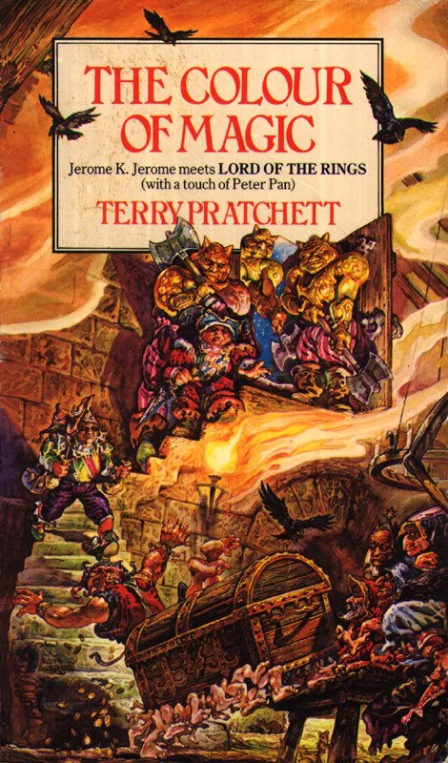
The Colour of Magic introduces readers to Discworld, a realm where the laws of physics are more like guidelines and magic is a force both potent and unpredictable.
Through the lens of the inept wizard Rincewind and the naïve tourist Twoflower, Pratchett unveils Discworld’s eccentricities, from the city of Ankh-Morpork to the Unseen University.
The city’s chaotic and bustling nature sets the stage for the satirical commentary that becomes a hallmark of Discworld.
2. Mort
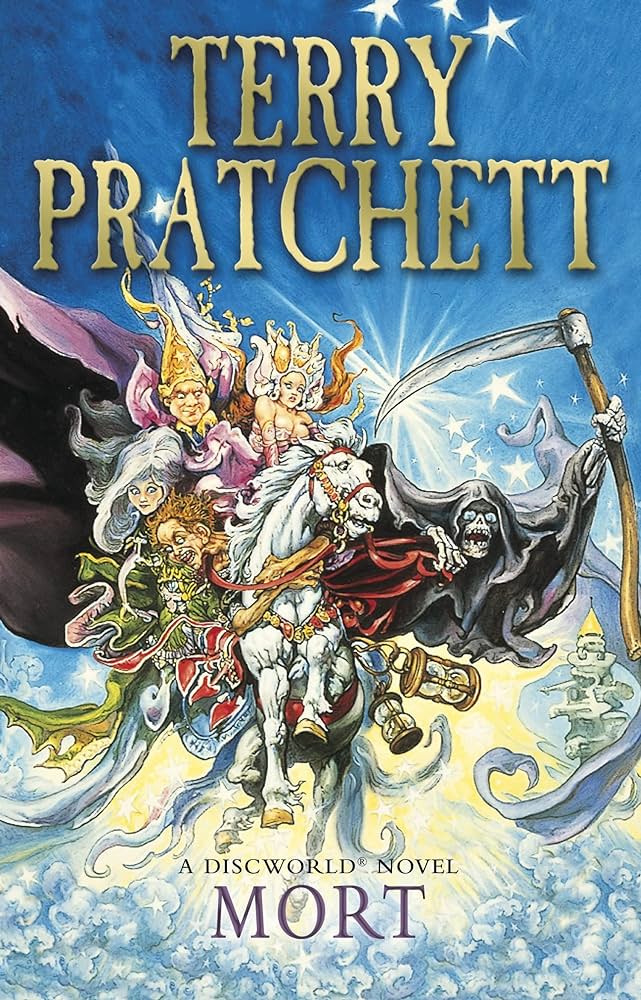
In Mort, Discworld takes a plunge into the realm of Death, literally. Mort, a bumbling apprentice, becomes Death’s apprentice and explores the unconventional aspects of the afterlife.
The book introduces readers to Death’s home, a dimension where time is irrelevant, and the bureaucratic intricacies of soul-reaping unfold. Discworld, even in its afterlife, maintains its whimsical and absurd charm.
3. Wyrd Sisters
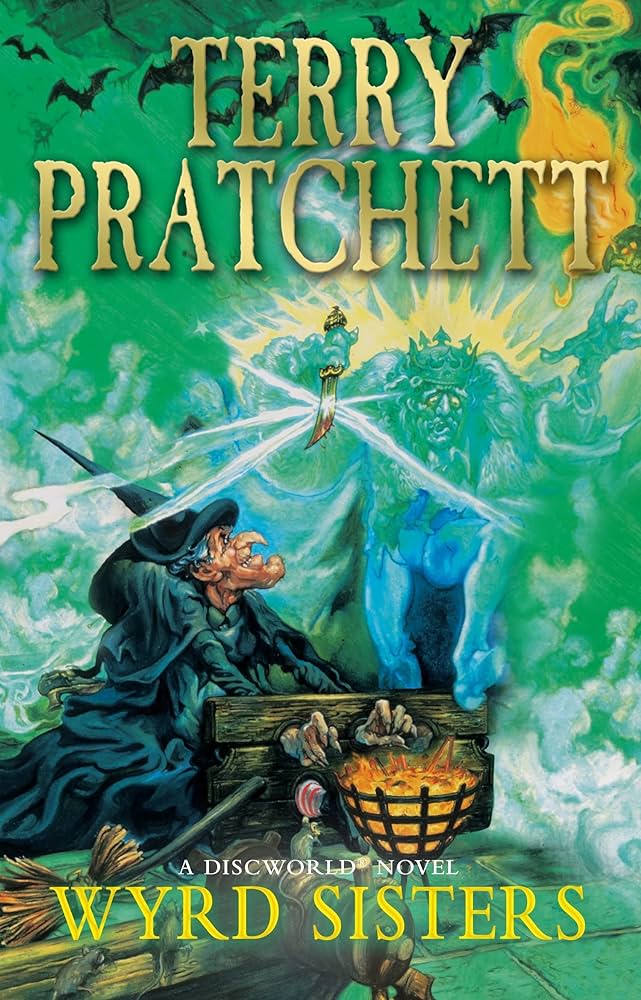
Wyrd Sisters takes Discworld into the realms of Shakespearean drama and witches.
The kingdom of Lancre becomes a stage for political intrigue and magical mayhem.
The three witches, Granny Weatherwax, Nanny Ogg, and Magrat Garlick, navigate both the challenges of power struggles and the hilarity of meddling in theatrical productions.
Discworld, in this installment, showcases its ability to seamlessly blend fantasy with elements of our own cultural narratives.
4. Guards! Guards!
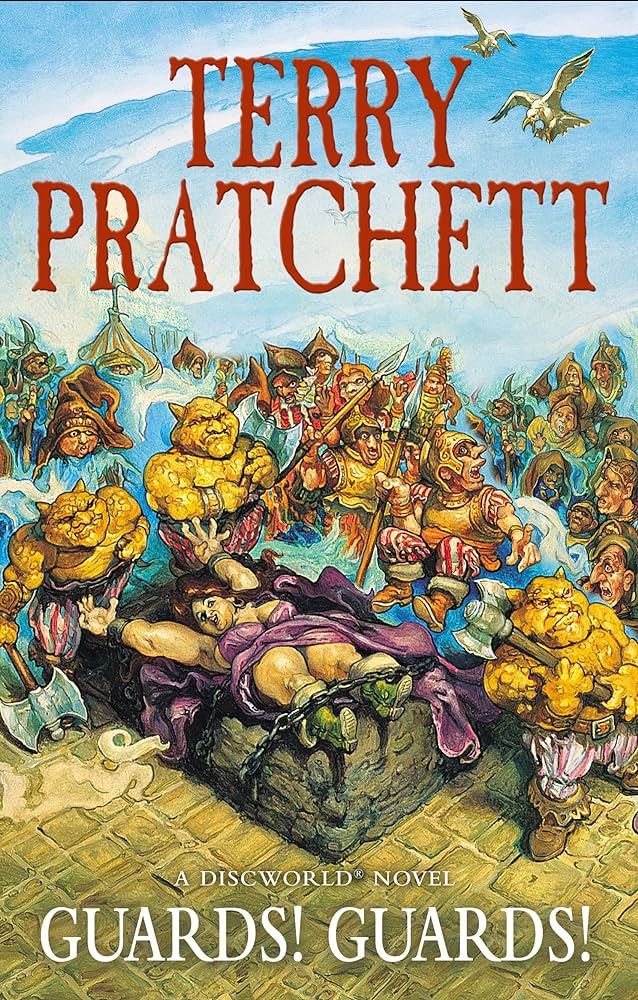
The introduction of the City Watch in Guards! Guards! shifts the focus to the city of Ankh-Morpork’s law enforcement.
Captain Vimes and his ragtag team of misfits embark on a journey to save the city from a dragon.
Discworld’s urban landscape, rife with corruption, crime, and fantastical creatures, becomes a canvas for Pratchett’s satirical exploration of societal norms and institutions.
5. Reaper Man
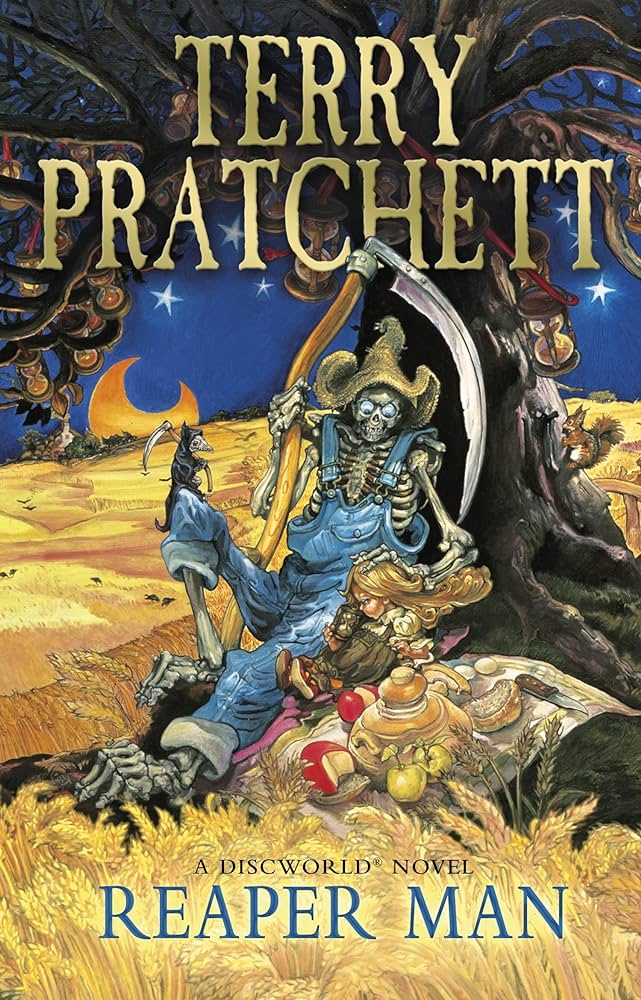
Reaper Man delves into the life of Death as he takes on a human persona and explores the intricacies of mortality.
From the bustling streets of Ankh-Morpork to the peculiarities of a shopping mall for the undead, Discworld expands its horizons to explore both the absurdities and profundities of life and death.
6. Lords and Ladies

Lords and Ladies introduces readers to the magical realm of the Elves and the interconnectedness of Discworld’s various dimensions.
The narrative explores the thin veil between worlds and the consequences of meddling with magical forces.
Pratchett uses Discworld’s fantastical elements to weave a tale that goes beyond traditional fantasy tropes.
7. Going Postal
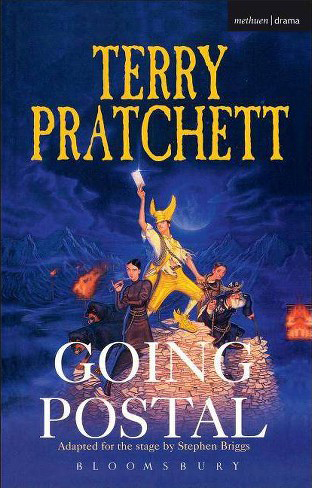
Going Postal brings the world of Discworld into the age of technology, with the introduction of the clacks—a magical communication system.
Moist von Lipwig, a reformed con artist, navigates both the challenges of bureaucracy and the potential for progress. Discworld evolves with the times, showcasing its ability to satirize not only the past but also the ever-changing landscape of modernity.
8. Unseen Academicals

Unseen Academicals takes readers back to the Unseen University, exploring the world of wizardry, soccer, and the dynamics of a magical university.
Discworld, through this installment, continues to blend the absurd with the profound, touching on themes of tradition, identity, and societal expectations.
Discworld emerges as a quintessential example of an epic fantasy world, defying conventions and inviting readers into a realm that is as absurd as it is insightful.
Terry Pratchett’s ability to blend humor, satire, and profound observations within the fantastical setting of Discworld has left its mark on the genre.
Each installment adds a layer to the complex tapestry of this eccentric world, ensuring that Discworld stands as a timeless masterpiece of literary imagination.
5. The Cosmere (Brandon Sanderson)

Brandon Sanderson’s Cosmere is a masterfully crafted literary universe that serves as the epic canvas for several of his prominent fantasy series, including Mistborn and The Stormlight Archive.
The Cosmere is not merely a collection of disparate stories but an interconnected web of narratives that share a common cosmic backdrop.
At the heart of this expansive universe lies Sanderson’s ingenuity in creating a consistent and intricate magic system known as Investiture.
The magic system of Investiture is a cornerstone of Sanderson’s world-building prowess within the Cosmere.
Unlike traditional fantasy magic, Investiture is a pervasive force that permeates the entire universe, existing in varying forms and degrees on different planets and realms.
It serves as a unifying element across Sanderson’s diverse series, providing readers with a sense of continuity and interconnectedness.
In Mistborn, Investiture takes the form of Allomancy and Feruchemy, where individuals can manipulate metals to gain supernatural abilities or store attributes for later use.
Meanwhile, in The Stormlight Archive, the magic system involves Surgebinding, which harnesses the power of powerful magical sprens and grants users extraordinary abilities.
The careful development and consistent application of these magical principles create a sense of immersion and believability within the Cosmere.
The narrative tapestry woven by Sanderson extends beyond the confines of individual series, with characters, worlds, and events interconnected in subtle and profound ways.
Readers encounter recurring motifs, entities, and overarching themes that transcend the boundaries of specific stories.
The Cosmere, therefore, becomes a playground for readers who delight in discovering hidden connections and overarching mysteries that unfold gradually across Sanderson’s works.
Sanderson’s meticulous attention to detail extends not only to the magic system but also to the cosmology and mythology of the Cosmere.
The Shards, god-like entities that hold immense power, play a central role in shaping the destiny of planets and civilizations.
Each Shard is associated with specific Intent, and their influence on the characters and events within the Cosmere adds layers of complexity and philosophical depth to the narrative.
Beyond the immediate storylines, the Cosmere encompasses a vast array of planets, each with its unique history, cultures, and ecosystems.
From the ash-covered landscapes of Scadrial to the shattered plains of Roshar, Sanderson showcases his ability to create distinct and immersive worlds that contribute to the overarching epic nature of the Cosmere.
Sanderson’s approach to the Cosmere is akin to an intricate mosaic, with each series representing a piece that, when viewed together, forms a grand and interconnected picture.
The allure of the Cosmere lies not only in the individual stories but in the sense of exploration and discovery as readers navigate this expansive universe.
As Sanderson continues to expand the Cosmere with new works and interconnected narratives, it stands as a testament to the boundless possibilities of epic fantasy and the skillful artistry of a master storyteller.
6. The Malazan Empire (Steven Erikson)
Steven Erikson’s Malazan Book of the Fallen series stands as a monumental achievement in epic fantasy, characterized by its expansive and intricately crafted world known simply as the Malazan world.
Erikson’s creation is a sprawling tapestry that unfolds across multiple continents, weaving together diverse civilizations, ancient histories, and a cast of characters as varied as the landscapes they traverse.
The series, renowned for its complexity, depth, and narrative richness, has garnered a devoted following of readers captivated by the vastness of the Malazan world.
The Malazan world is not confined to a single locale; rather, it encompasses a multitude of continents, each with its unique geography, cultures, and histories.
From the sprawling Malazan Empire to the enigmatic lands of Seven Cities and the war-torn Genabackis, Erikson crafts a diverse and immersive world that serves as the canvas for a multitude of intersecting and evolving storylines.
At the heart of the Malazan world are the gods and ascendants, divine beings whose influence shapes the destinies of mortals and immortals alike.
The Pantheon of Ascendants introduces readers to entities like Anomander Rake, the enigmatic Lord of Moon’s Spawn, and the imposing figure of Hood, the Lord of Death.
These god-like beings, with their intricate relationships and motivations, add layers of depth and philosophical complexity to the narrative.
One of the defining features of the Malazan world is the vast array of characters populating its landscapes.
From soldiers and mages to undead warriors and ancient beings, Erikson introduces readers to a tapestry of individuals, each with their own pasts, struggles, and aspirations.
The convergence of these diverse characters creates a mosaic of perspectives, fostering a rich and multifaceted reading experience.
Erikson’s commitment to world-building extends to the historical and mythological foundations of the Malazan world.
Ancient civilizations, long-lost empires, and forgotten events shape the present, influencing the characters’ actions and the unfolding epic.
The convergence of these temporal layers adds a sense of grandeur and depth, making the Malazan world feel like a living, breathing entity with a storied past.
The Malazan Book of the Fallen series is celebrated not only for its intricate world-building but also for its thematic exploration of war, power, compassion, and the consequences of mortal and divine actions.
Erikson weaves philosophical and existential inquiries into the narrative, inviting readers to contemplate the complexities of morality and the nature of existence within the vast expanse of the Malazan world.
The sheer scale and complexity of the Malazan world can be initially challenging for readers, but it is precisely this ambitious scope that sets the series apart in the realm of epic fantasy.
Erikson’s willingness to embrace the vastness of his creation, coupled with his skillful storytelling, results in a narrative that is both immersive and intellectually stimulating.
Gardens of the Moon

The series commences with Gardens of the Moon, thrusting readers into the midst of the Malazan Empire’s military campaigns.
The city of Darujhistan and the floating fortress of Moon’s Spawn become early focal points, showcasing the empire’s military might and the intricate dynamics between its leaders.
The introduction of the Bridgeburners, an elite military unit, sets the stage for the convergence of mortal and otherworldly forces.
Deadhouse Gates
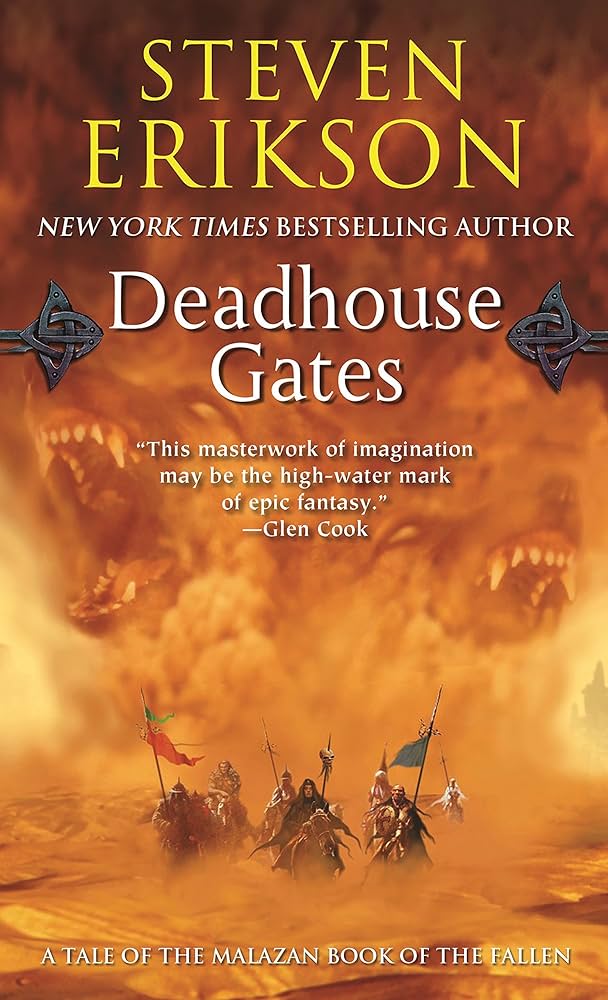
Deadhouse Gates expands the canvas of the Malazan Empire to the subcontinent of Seven Cities.
The sprawling desert landscapes, rebellions, and the convergence of powerful Ascendants shape the narrative.
The Malazan world, through this installment, grows in complexity as it explores the far-reaching consequences of imperial expansion and the clash of cultures within its expansive borders.
Memories of Ice

In Memories of Ice, the Malazan Empire faces external threats from the ancient Jaghut Tyrant and the enigmatic Crippled God.
The convergence of armies, magic, and the involvement of the T’lan Imass, a race of undead warriors, showcase the empire’s struggle against forces that transcend mortal conflicts.
The Malazan world becomes a stage for cosmic battles and existential dilemmas.
House of Chains
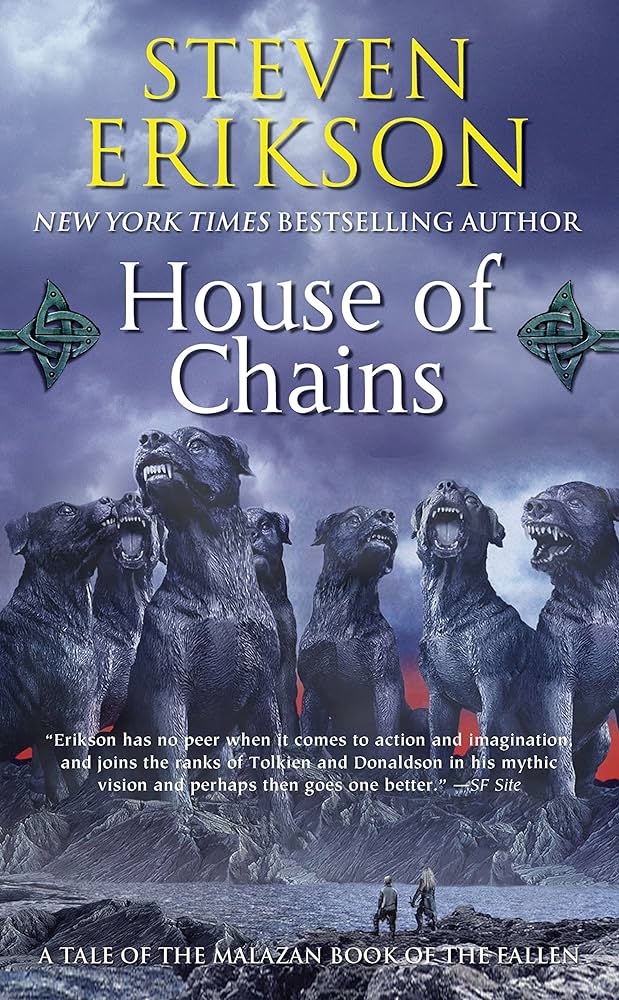
House of Chains delves into the past, exploring the origins of Karsa Orlong and the ascension of the Malazan Empire.
The Chain of Dogs, an epic march across a war-torn land, illustrates the cost of imperial expansion and the toll it takes on both conquerors and the conquered.
The narrative depth expands, revealing the intricacies of power and the impact of historical events on the present.
Midnight Tides
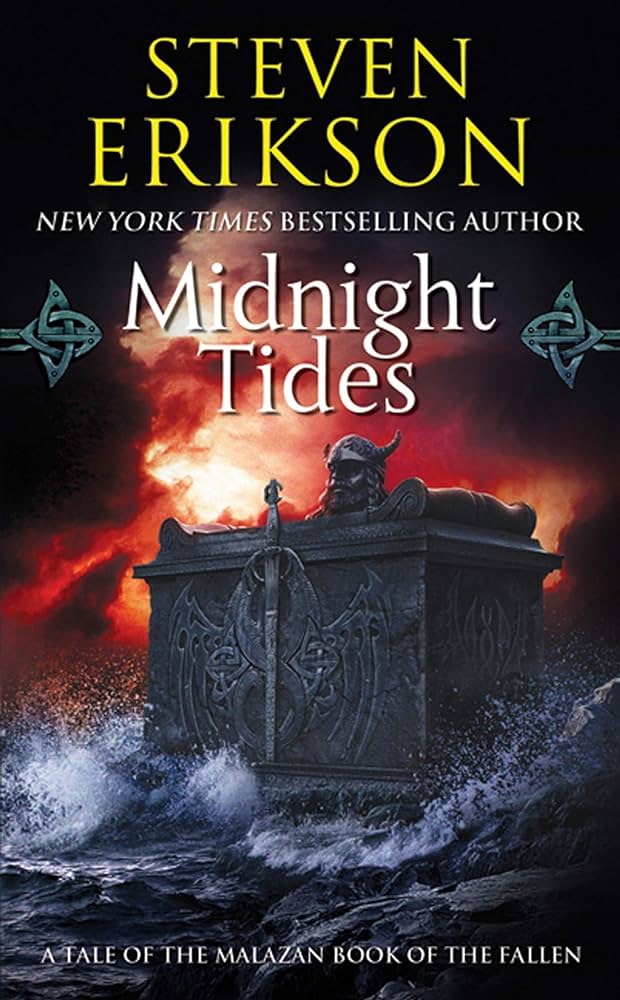
Midnight Tides transports readers to the continent of Lether, showcasing the economic and political machinations of another powerful empire.
The Malazan world expands its geopolitical scope, introducing new cultures and civilizations while maintaining thematic threads that tie back to earlier narratives.
The convergence of storylines across continents emphasizes the interconnectedness of the Malazan universe.
The Bonehunters

The Bonehunters returns to the Malazan Empire, exploring the aftermath of past conflicts and the empire’s continued expansion.
The convergence of characters from different storylines highlights the tapestry of relationships that define the Malazan world.
The Bridgeburners, thought to be disbanded, find new purpose as the empire faces both internal and external threats.
Reaper’s Gale
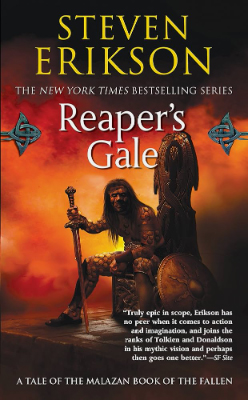
Reaper’s Gale introduces the continent of Letheras, bridging the narratives of previous installments.
The convergence of characters and the exploration of convergence itself become central themes.
The Malazan world, through the lens of various characters and landscapes, becomes a living entity shaped by the actions and choices of mortals and immortals alike.
Toll the Hounds
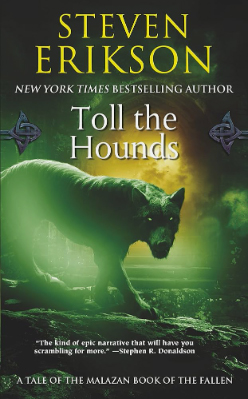
Toll the Hounds delves into the city of Darujhistan, intertwining the fates of characters old and new.
The narrative complexity deepens as themes of mortality, divinity, and existential questions take center stage.
The Malazan world becomes a stage for introspection and philosophical exploration, transcending the traditional boundaries of epic fantasy.
Dust of Dreams

Dust of Dreams unfolds in the perilous lands of the Glass Desert, emphasizing the challenges faced by both the Malazan Empire and its adversaries.
The convergence of armies and the exploration of the Deck of Dragons—a symbolic representation of the Malazan world’s divine and mystical forces—further illustrate the cosmic nature of the narrative.
The Crippled God
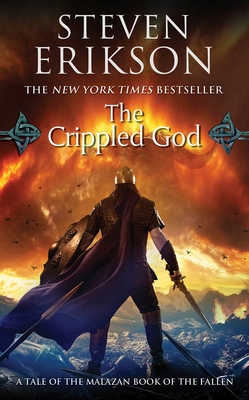
The series reaches its culmination with The Crippled God, where the Malazan Empire faces its greatest existential threat.
The convergence of storylines, the resolution of long-standing conflicts, and the exploration of compassion and redemption elevate the Malazan world to a climax that echoes across the narrative tapestry.
Erikson’s ability to weave together diverse cultures, intricate magic systems, and a vast array of characters creates a narrative tapestry that transcends the conventional boundaries of the genre.
The Malazan world, with its geopolitical intricacies, cosmic conflicts, and philosophical depth, invites readers on an epic journey that unfolds across continents, civilizations, and epochs.
Examining Epic Fantasy Worlds in Gaming
In gaming few genres capture the essence of boundless imagination and immersive storytelling as profoundly as epic fantasy.
These digital landscapes, replete with magical realms, mythical creatures, and ancient lore, serve as the canvas for some of the most captivating and enduring narratives in the gaming world.
From the towering mountains and enchanted forests to the rich histories and magical systems that shape their narratives, epic fantasy worlds are more than mere settings; they are living, breathing entities that invite players to immerse themselves in tales of heroism, magic, and destiny.
Tamriel (The Elder Scrolls series)
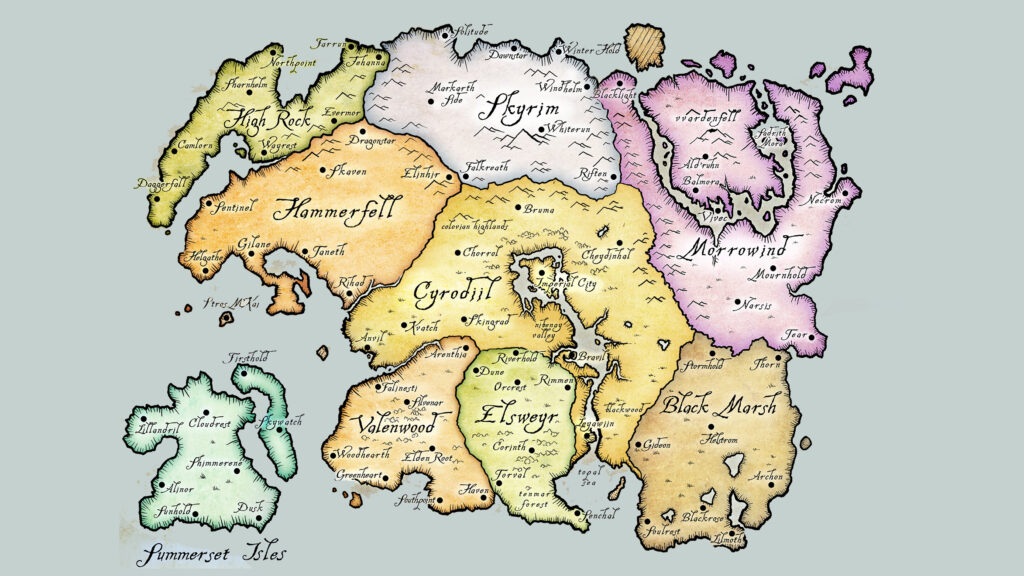
Tamriel, the sprawling and diverse continent at the heart of The Elder Scrolls series, stands as one of the most iconic and meticulously crafted epic fantasy worlds in the realm of video games.
Encompassing a myriad of landscapes, cultures, and histories, Tamriel is a vast canvas upon which the epic tales of The Elder Scrolls unfold.
As the central setting for games like Skyrim, Oblivion, and Morrowind, Tamriel has become synonymous with open-world exploration, rich lore, and the freedom to forge one’s destiny.
The geography of Tamriel is a testament to the creative depth of its world-building.
From the icy tundras of Skyrim to the dense forests of Valenwood, the arid deserts of Hammerfell, and the swampy expanses of Black Marsh, each region boasts a distinct and immersive environment.
Cities and settlements, each with its unique architectural style, dot the landscape, offering a sense of cultural diversity that permeates every corner of the continent.
Cultural richness is a defining feature of Tamriel.
The various races, from the noble and magical High Elves of the Summerset Isles to the resilient and warlike Nords of Skyrim, bring Tamriel to life with their customs, traditions, and intricate societal structures.
The political intrigue between the various factions, such as the Imperial Empire and the rebellious Stormcloaks, adds layers of complexity to the world, making every interaction and quest a nuanced exploration of the cultural tapestry that defines Tamriel.
History and mythology form the backbone of Tamriel’s narrative depth.
The continent is steeped in ancient lore, including the rise and fall of empires, the machinations of powerful Daedric Princes, and the enigmatic Elder Scrolls that hold glimpses into the fabric of time.
Players can unearth the secrets of the past as they delve into forgotten dungeons, read ancient tomes, and interact with characters who carry the weight of centuries on their shoulders.
Magic is woven into the very fabric of Tamriel.
The Mages Guild, the College of Winterhold, and various magical orders dot the continent, offering players the opportunity to delve into the arcane arts.
The existence of powerful artifacts, like the legendary Elder Scrolls or the Daedric artifacts bestowed by the malevolent Daedric Princes, adds a layer of mysticism to the world, where the boundaries between the mundane and the supernatural blur.
Tamriel’s allure lies not only in its vastness but in the dynamic nature of its storytelling.
The concept of the “Hero of Prophecy” and the player’s ability to shape the destiny of the world through their actions create a sense of agency that is fundamental to the Elder Scrolls experience.
From thwarting the plans of dragons in Skyrim to navigating the political intrigue in the Imperial City of Oblivion, players are not mere observers but active participants in the unfolding epic.
Thedas (Dragon Age series)
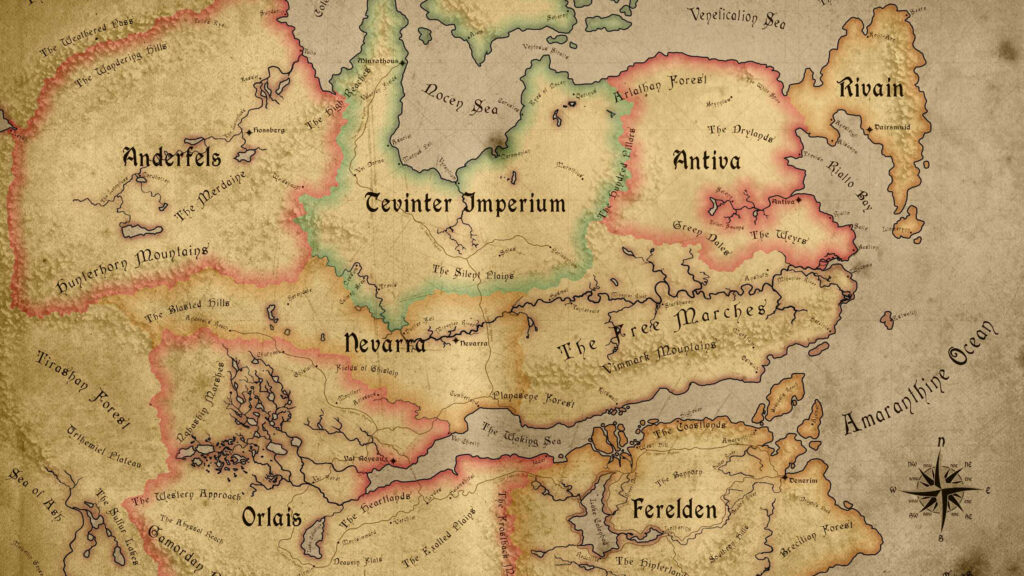
Thedas, the vibrant and complex world of the Dragon Age series, emerges as an epic fantasy realm of unparalleled depth and intrigue.
A land marked by a tumultuous history, Thedas serves as the stage for grand narratives, political machinations, and a struggle between the forces of magic and the mundane.
From the towering peaks of the Frostback Mountains to the sprawling landscapes of Ferelden and Orlais, Thedas captivates players with its diverse and immersive environments, each region teeming with its own distinct cultures, landscapes, and challenges.
Cultural diversity is a defining characteristic of Thedas, with a multitude of races and civilizations contributing to the rich tapestry of its world-building.
The Qunari, the Dalish Elves, the Dwarves of Orzammar, and the human nations all bring unique customs, histories, and perspectives to the forefront.
The tensions and alliances between these disparate cultures create a dynamic and evolving backdrop, adding layers of complexity to the narrative that unfold across the Dragon Age games.
The history of Thedas is etched with the echoes of ancient conflicts, from the devastating Blights unleashed by the darkspawn to the intricate power struggles between the Chantry and the Templars.
Ruined cities, ancient elven ruins, and mysterious Fade rifts serve as tangible remnants of a past filled with cataclysmic events and monumental decisions that shape the present.
The lore of Thedas is not a stagnant backdrop but a living, breathing entity that informs the choices players make and influences the unfolding epic.
Magic, a fundamental element of Thedas, adds an extra layer of complexity to the world.
The constant tension between mages and non-mages, the delicate balance maintained by the Circle of Magi, and the existence of the Fade as a parallel dimension contribute to the mystique and unpredictability of the magical forces at play.
The Veil, the ethereal barrier separating the mortal realm from the Fade, becomes a focal point for both wonder and danger, as mages grapple with the lure of forbidden knowledge and the threat of demonic incursions.
Thedas’s narrative prowess lies in its ability to weave personal stories into the broader tapestry of world events.
As the player navigates through political intrigues, confronts ancient threats, and forges alliances, they become an integral part of the epic unfolding within the Dragon Age universe.
Choices carry weight, and the consequences of decisions ripple through the fabric of Thedas, shaping the destinies of nations and individuals alike.
The Continent (The Witcher)
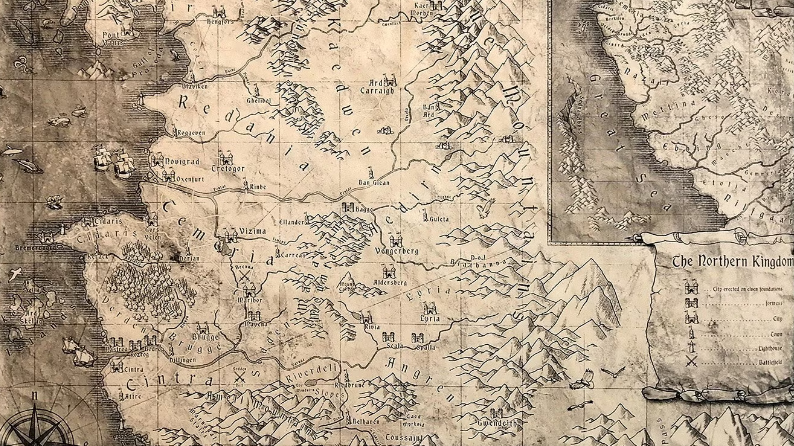
The Continent in The Witcher series, a sprawling and atmospheric realm, serves as a dark and captivating backdrop for one of the most acclaimed epic fantasy narratives in video games.
The Continent is a land of stark contrasts, characterized by dense forests, foreboding mountain ranges, and medieval-inspired settlements that exude an air of gritty realism.
The Witcher’s world-building is a masterclass in blending the fantastical with the grim, presenting players with a universe that is as morally complex as it is visually stunning.
Cultural diversity flourishes across the Continent, with each region inhabited by distinct civilizations, each with its customs, languages, and social structures.
From the trade-centric Free City of Novigrad to the Skellige Isles, a collection of Viking-like isles steeped in maritime traditions, The Witcher immerses players in a world where every locale tells a story of its own.
The political landscape is equally intricate, with the Northern Realms, Nilfgaardian Empire, and various independent city-states vying for power and influence.
History echoes through the landscapes of the Continent, with the scars of wars, invasions, and ancient prophecies etched into the very soil.
Ruined keeps, haunted battlefields, and the looming specter of the Wild Hunt add layers of depth to The Witcher’s world, turning every exploration into a journey through a living and breathing chronicle of past events.
The Continent is a world haunted by its own history, a place where the choices of yesteryears reverberate through the present.
Magic, a pervasive force on the Continent, infuses the world with an otherworldly ambiance.
The use of signs, alchemical potions, and the mysterious arts of sorcery create a sense of wonder and danger.
Ancient elven ruins, haunted swamps, and mystical beings add a layer of the fantastical to the Continent, where the veil between the material world and the ethereal is thin, allowing for encounters with mythical creatures and supernatural entities.
At the heart of The Witcher’s epic fantasy world is Geralt of Rivia, a monster hunter known as a Witcher.
His journey, intertwined with political intrigue, personal quests, and the looming threat of the White Frost, propels players through the Continent’s myriad landscapes and narratives.
The choices players make as Geralt ripple through the fabric of the world, influencing the fates of kingdoms and individuals alike.
Azeroth (World of Warcraft)
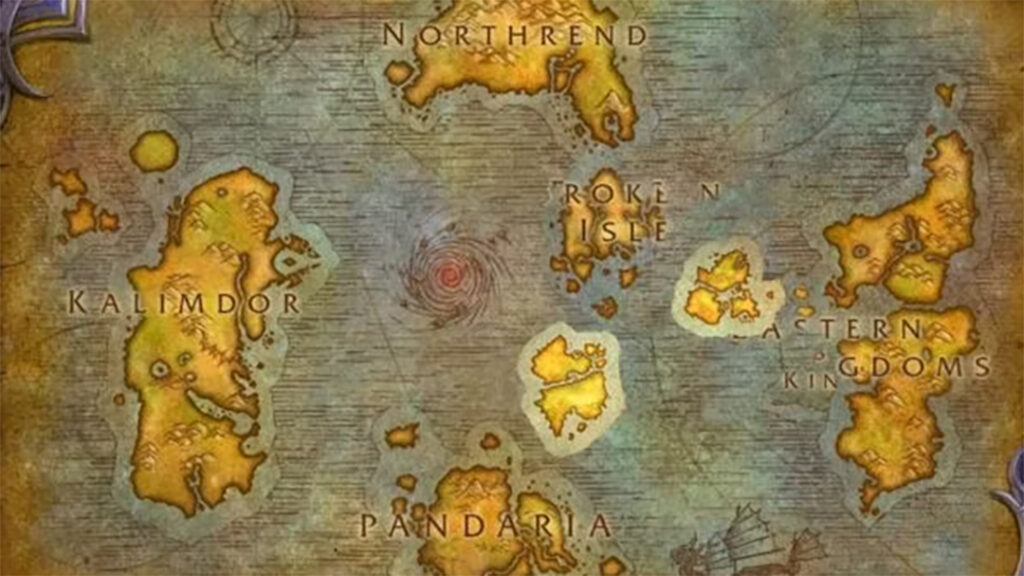
Azeroth, the central realm in the World of Warcraft franchise, stands as an iconic and expansive epic fantasy world that has captivated millions of players worldwide.
This rich and diverse world serves as the stage for the perpetual conflict between the Horde and the Alliance, two factions representing a multitude of races, cultures, and histories.
From the towering peaks of Highmountain to the mystical forests of Teldrassil, Azeroth is a sprawling continent that beckons adventurers to explore its vast landscapes and partake in epic quests.
Geographically, Azeroth is a marvel of design, featuring diverse ecosystems and terrains that range from the snowy expanses of Winterspring to the arid deserts of Tanaris.
Each zone in Azeroth possesses a unique aesthetic and atmosphere, whether it’s the ethereal beauty of the Eversong Woods or the eerie, haunted landscapes of Duskwood.
The seamless transition between these zones creates a sense of continuity, fostering a world that feels alive and interconnected.
The cultural diversity within Azeroth is a testament to its intricate world-building.
The Alliance encompasses races such as humans, dwarves, and night elves, while the Horde unites orcs, trolls, and tauren, among others.
Each race brings its own customs, traditions, and architectural styles, contributing to the visual and narrative richness of Azeroth.
Cities like Stormwind and Orgrimmar stand as testament to the unique characteristics of their respective factions, embodying the cultural identities of the Alliance and the Horde.
Azeroth’s history is a tapestry woven with ancient conflicts, cataclysmic events, and the rise and fall of empires.
From the Sundering that shattered the world to the more recent events like the defeat of the Lich King in Northrend, the lore of Azeroth provides a sense of depth and continuity.
Ancient ruins, abandoned strongholds, and remnants of past wars serve as poignant reminders of the world’s storied past, waiting to be uncovered by intrepid adventurers.
Magic courses through the very veins of Azeroth, manifesting in the form of powerful spells, enchanted artifacts, and the influence of otherworldly beings.
The Well of Eternity, a mystical source of arcane energy, and the presence of powerful dragons like Alexstrasza and Ysera add a layer of the fantastical to Azeroth.
The existence of parallel dimensions, such as the Emerald Dream and the Twisting Nether, amplifies the otherworldly elements that define the epic fantasy genre.
One of the defining features of Azeroth is the dynamic storytelling facilitated by the MMORPG (Massively Multiplayer Online Role-Playing Game) format.
Players aren’t merely passive observers but active participants in the ongoing narrative.
Cataclysmic events like the opening of the Dark Portal or the invasion of the Burning Legion shape the course of Azeroth, creating a living, breathing world that evolves with each expansion.
Azeroth’s enduring legacy lies in its ability to transport millions of players into a realm where the fantastical becomes a tangible, shared experience.
Hyrule (The Legend of Zelda)
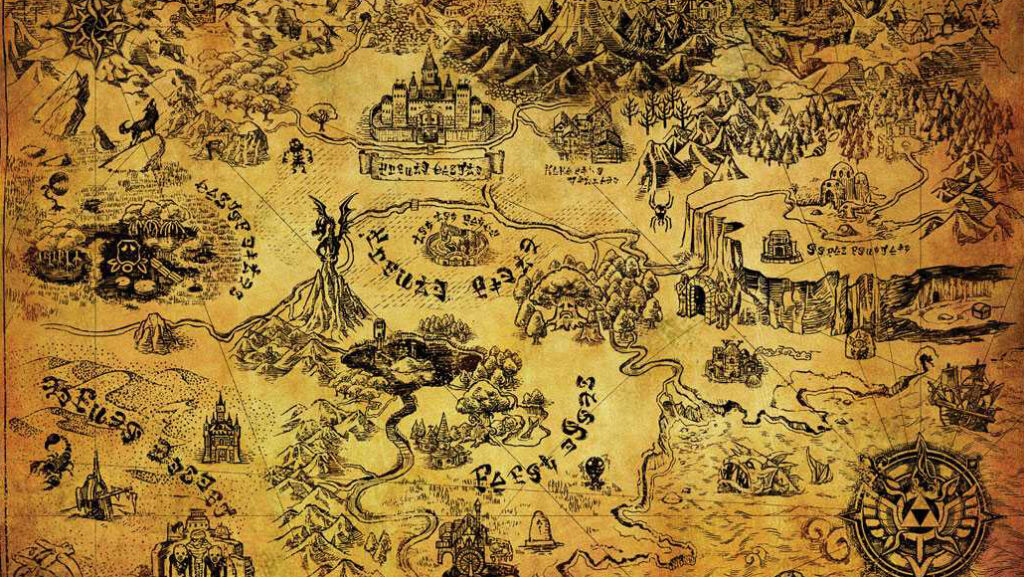
Hyrule, the mythical realm at the heart of The Legend of Zelda series, stands as an enduring testament to the power of epic fantasy world-building in the realm of video games.
A tapestry of magic, heroism, and mythical creatures, Hyrule is the iconic setting where the legendary hero, Link, embarks on quests to thwart the machinations of the dark forces embodied by Ganon.
The world of Hyrule is a harmonious blend of fantastical landscapes, rich lore, and a narrative that weaves together themes of courage, destiny, and the enduring battle between good and evil.
The geography of Hyrule is diverse and enchanting, featuring vast plains, dense forests, expansive lakes, and towering mountain ranges.
Each region possesses a distinct charm and unique challenges, from the mystic Lost Woods to the bustling market town of Castle Town.
The iconic landmarks, such as Death Mountain and Lake Hylia, serve as more than just geographical features—they become integral elements of the world’s lore, housing ancient temples, hidden treasures, and powerful artifacts.
Cultural richness permeates Hyrule, with different races and civilizations contributing to its vibrant tapestry.
The Hylians, Gorons, Zoras, Rito, and Kokiri are just a few of the diverse races that inhabit the land.
Their customs, languages, and architectural styles add layers of depth to the world, creating a sense of a living, breathing realm.
The royal presence of Hyrule Castle and the spiritual significance of the Temple of Time are focal points that tie together the cultural and historical threads of the land.
The history of Hyrule is steeped in legend and myth, with tales of creation, ancient conflicts, and the recurring cycle of heroes.
The Triforce, a mystical artifact that embodies the essence of power, wisdom, and courage, lies at the core of Hyrule’s mythology.
The reincarnation of Link, Princess Zelda, and the malevolent Ganon is a recurring motif that connects the various timelines and games within The Legend of Zelda series, creating a sense of temporal continuity.
Magic is an integral part of Hyrule, manifested through the enchanted artifacts, ancient spells, and the presence of divine beings.
The iconic Master Sword, capable of repelling evil, and the recurring motifs of fairies, potions, and mystical instruments contribute to the fantastical ambiance of the world.
Temples and shrines scattered across the land house powerful artifacts and tests of skill, emphasizing the connection between magic and the hero’s journey.
One of the defining features of Hyrule is its dynamic evolution across different games and timelines.
While certain locations remain constant, the world undergoes transformations in response to the events of each installment.
The interconnectedness of these games creates a sense of continuity, allowing players to witness the consequences of past actions and explore familiar locations with a fresh perspective.
As players journey through the expansive fields, solve intricate puzzles in dungeons, and face off against mythical creatures, they become part of the enduring legacy that is Hyrule—a world that continues to inspire and captivate generations of gamers.
Notable Examples of Epic Fantasy Worlds in Television
Television has also become a canvas for epic fantasy, offering viewers the opportunity to escape into mesmerizing worlds where magic, mythical creatures, and heroic quests unfold.
From ancient realms shrouded in mystery to sprawling landscapes torn by political intrigue, epic fantasy television has redefined the boundaries of storytelling.
His Dark Materials (2019-present)
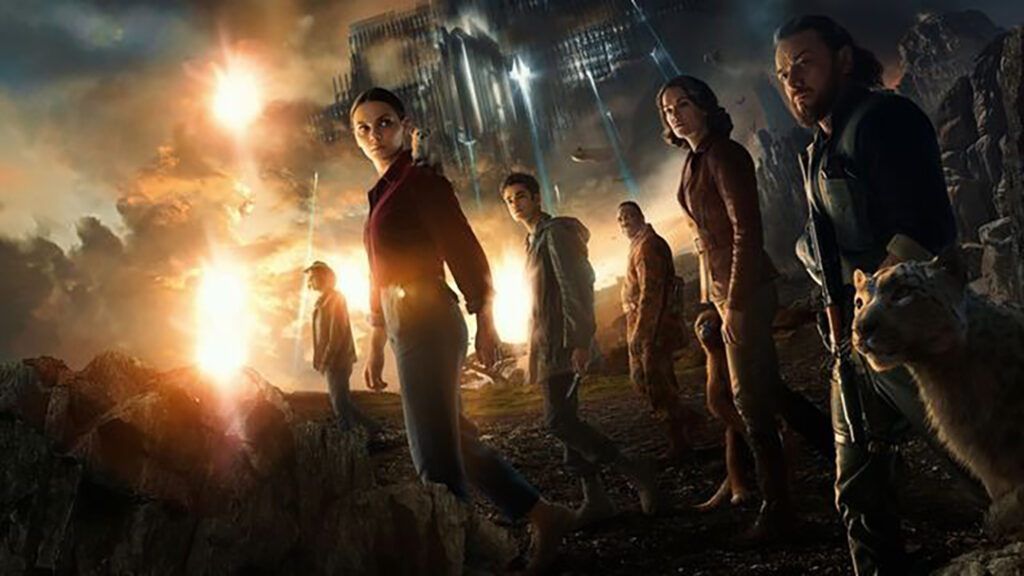
His Dark Materials, adapted from Philip Pullman’s renowned trilogy, embarks on a mesmerizing journey through parallel worlds, crafting an epic fantasy landscape that captivates audiences with its unique blend of magic, science, and profound philosophical themes.
At its core, the series unfolds in a multiverse, a vast and interconnected realm where reality diverges into different dimensions, each with its own set of rules and wonders.
The concept of daemons, physical manifestations of a person’s soul in the form of animal companions, adds a distinctive layer to the world-building of His Dark Materials.
These creatures not only serve as loyal companions but also represent the essence of their human counterparts.
The bond between humans and daemons is a testament to the emotional depth and interconnectedness of the characters within the series.
Armored bears, or panserbjørne, further enrich the fantastical tapestry of the world.
These sentient, armor-clad bears inhabit the icy landscapes of the North, embodying strength, honor, and a unique societal structure.
Their inclusion adds a layer of anthropomorphic complexity to the narrative, contributing to the series’ exploration of diverse cultures and civilizations.
Central to the plot is the mysterious substance known as Dust, a cosmic particle that holds profound implications for the nature of consciousness and existence.
The quest to understand Dust becomes a focal point of the narrative, intertwining Lyra Belacqua’s journey with grander metaphysical questions about the fabric of reality itself.
As the series unfolds, viewers follow Lyra Belacqua, a young and spirited protagonist, on her odyssey through these parallel worlds.
Her journey becomes a prism through which the complexities of religion, power, and destiny are refracted.
The exploration of organized religion, authority, and the impact of knowledge and truth on society adds depth and relevance, drawing parallels to our own world and inviting contemplation on broader existential and ethical questions.
In this world where truth and deception walk hand in hand, His Dark Materials presents a nuanced narrative that challenges preconceptions and invites viewers to question the status quo.
The series weaves a tapestry of intrigue and wonder, using the fantastical elements of its world to explore profound aspects of the human experience.
As Lyra navigates the intricate webs of power, confronts moral dilemmas, and grapples with the cosmic forces at play, His Dark Materials emerges as an exemplary work of epic fantasy that seamlessly merges the magical with the thought-provoking.
The Magicians (2015-2020)
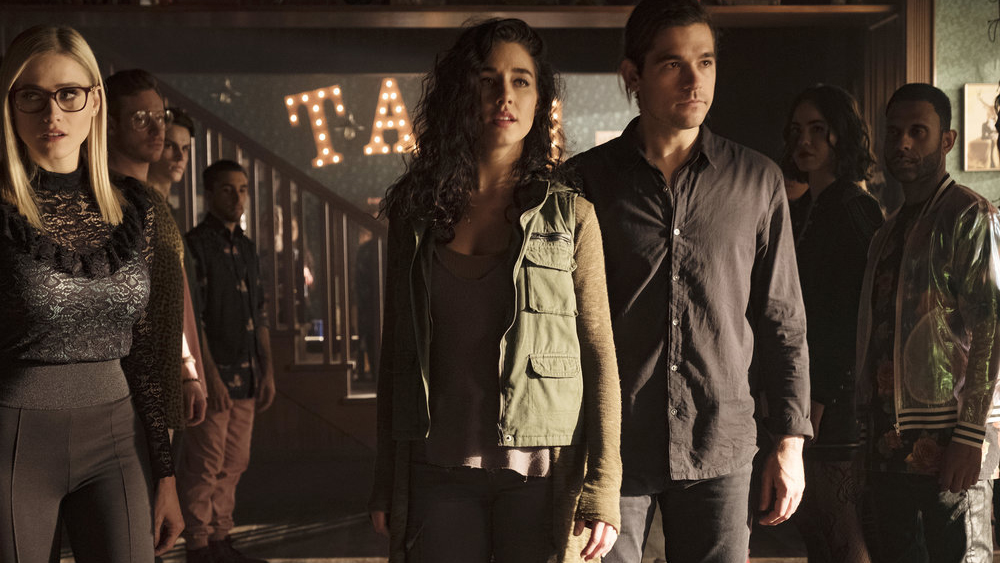
The Magicians serves as a distinctive entry in the realm of fantasy television, transporting viewers to the enchanting and intellectually stimulating Brakebills University for Magical Pedagogy.
The series introduces us to a world where magic is not only a fantastical force but also an academic pursuit, with Brakebills standing as the premier institution for training magicians.
The university’s hallowed halls become a gateway to the intricacies of spellcasting, arcane knowledge, and the exploration of the fantastical.
The academic setting of Brakebills provides a unique lens through which magic is approached with both wonder and scholarly rigor.
The characters, initially wide-eyed and eager students, evolve into adept magicians as they navigate the complexities of magical theory, spellcraft, and the ethical dilemmas inherent in wielding such power.
The university setting serves as the foundation for character development, showcasing the transformative journey of the protagonists from novices to seasoned magicians.
As The Magicians progresses, the narrative expands beyond the confines of Brakebills, unleashing the characters into a myriad of magical realms.
Each realm possesses its own set of rules, challenges, and enchantments, offering viewers a diverse and visually stunning array of magical landscapes.
From the fantastical kingdom of Fillory, inspired by classic fantasy literature, to the ethereal and dreamlike Neitherlands, where magical doors open to different dimensions, the series seamlessly integrates these realms into the overarching narrative.
The exploration of these magical landscapes is not merely a visual spectacle but a narrative device that propels the story forward.
Each realm introduces new trials, mythical creatures, and moral quandaries, shaping the characters’ growth and the overarching themes of the series.
The challenges within these realms become metaphors for the characters’ internal struggles, providing a nuanced layer to the fantastical elements.
Mythical creatures, another hallmark of fantasy, come to life in The Magicians.
From majestic and awe-inspiring to eerie and malevolent, these creatures inhabit the magical realms, adding a sense of wonder and danger.
Whether encountering talking animals in Fillory or facing off against ancient beings in the Mirror Realm, the series embraces the richness of fantasy folklore, creating a world where the magical and the mundane coexist.
The series invites viewers on a journey that not only explores the external wonders of magical landscapes but also delves into the internal landscapes of the characters’ psyches.
Through its multifaceted approach to magic, The Magicians becomes a testament to the versatility of the fantasy genre in television, where the fantastical becomes a mirror to the complexities of the human experience.
Killjoys (2015-2019)

Killjoys takes its viewers on an interstellar adventure, immersing them in the captivating and complex world of The Quad.
Far from Earth and spanning a distant planetary system, The Quad becomes the backdrop for a unique blend of space opera and epic fantasy, where political conflicts and bounty hunting take center stage.
The series follows a trio of skilled and morally ambiguous bounty hunters known as Killjoys—Dutch, Johnny, and D’avin—as they navigate the intricacies of this far-reaching and politically charged universe.
At the heart of Killjoys is The Quad, a system comprising four planets that are as diverse as they are enigmatic.
From the densely populated Westerley to the lush and opulent Leith, each planet within The Quad boasts its own distinct culture, societal norms, and political landscape.
The world-building in Killjoys extends beyond the physical environments, delving into the social structures and power dynamics that shape the lives of its inhabitants.
The bounty hunters, or Killjoys, operate within this dynamic system, serving as freelancers tasked with apprehending individuals with outstanding warrants.
Their role introduces viewers to the underbelly of The Quad, where crime, corruption, and political intrigue abound.
As the protagonists navigate the challenges of their profession, they become entangled in larger conspiracies that have repercussions not just for individuals but for the entire planetary system.
Political conflicts serve as a driving force in Killjoys, elevating the series beyond traditional space opera tropes.
The tension between the ruling elite, represented by the mysterious and powerful Nine, and the common citizens sets the stage for a narrative filled with twists, betrayals, and shifting allegiances.
The political intricacies add depth to the storytelling, creating a world where the actions of the characters have far-reaching consequences.
The Quad is not merely a static backdrop but a living, breathing entity that evolves throughout the series.
The world of Killjoys expands beyond the confines of individual planets, exploring spaceships, hidden bases, and the mysterious greenspace—a dimension that defies conventional reality.
The series seamlessly integrates technology, advanced weaponry, and the mystical green plasma that plays a central role in the characters’ destinies.
The Quad becomes a canvas where space opera elements merge with political intrigue, creating a world that is as visually stunning as it is narratively complex.
The series offers a fresh take on the bounty hunter trope, infusing it with a rich and expansive universe that captures the imagination of viewers, making Killjoys a standout example of epic fantasy in the realm of science fiction television.
Adventure Time (2010-2018)

Adventure Time is a whimsical and imaginative animated series that transports viewers to the enchanting Land of Ooo, a post-apocalyptic world brimming with magic, peculiar creatures, and fantastical landscapes.
At its core, the show follows the thrilling adventures of Finn the Human and his shape-shifting canine companion, Jake the Dog, as they navigate the myriad wonders and challenges of this uniquely crafted universe.
The Land of Ooo itself serves as a testament to the boundless creativity of the show’s creators. In the aftermath of an unspecified cataclysmic event, Ooo emerges as a vibrant, unpredictable, and often surreal landscape.
From the Candy Kingdom ruled by the benevolent Princess Bubblegum to the Ice Kingdom presided over by the misunderstood Ice King, each region of Ooo possesses its own distinct personality, governed by whimsical and sometimes eccentric characters.
Magic is not merely a fantastical element in the Land of Ooo; it is the very essence that breathes life into the surroundings.
The show seamlessly weaves spells, enchantments, and mythical artifacts into its narrative, creating a world where the laws of reality are both malleable and unpredictable.
This magical undercurrent provides the perfect backdrop for the dynamic and unpredictable adventures that Finn and Jake embark upon.
The Land of Ooo is home to a vast array of creatures, each more imaginative and quirky than the last.
From the lovable and naive BMO to the morally ambiguous Marceline the Vampire Queen, the show introduces viewers to characters that defy traditional expectations.
These characters, whether allies or adversaries, contribute to the series’ charm, offering insights into the complexities of friendship, morality, and self-discovery.
The landscapes of Ooo are equally diverse, ranging from lush, candy-colored forests to desolate wastelands and mystical dungeons.
The show’s animation style accentuates the fantastical nature of these environments, immersing viewers in a visual feast of vibrant hues and imaginative designs.
Ooo becomes a playground of the absurd and the marvelous, inviting audiences to explore the unknown alongside Finn and Jake.
As Finn and Jake embark on their adventures, they encounter challenges that go beyond the conventional hero’s journey.
The show seamlessly blends lighthearted humor with moments of introspection, exploring themes of identity, existentialism, and the inevitability of change.
Beneath the surface of its whimsy, “Adventure Time” provides a nuanced narrative that resonates with audiences of all ages.
Adventure Time succeeds in crafting a unique and memorable epic fantasy world in the Land of Ooo.
By infusing the post-apocalyptic setting with magic, unconventional characters, and a healthy dose of humor, the series creates a universe that transcends traditional storytelling boundaries.
Finn and Jake’s escapades not only entertain but also offer a poignant exploration of the human condition, making the Land of Ooo a timeless and cherished destination for fans of imaginative storytelling.
Shadow and Bone (2021 – present)

Shadow and Bone, based on Leigh Bardugo’s Grishaverse novels, stands as a compelling example of an epic fantasy world brought to life on the small screen.
The series introduces viewers to the war-torn land of Ravka, a sprawling realm infused with magic, political intrigue, and a looming darkness known as the Shadow Fold.
As we delve into the intricacies of this fantastical world, it becomes evident that “Shadow and Bone” exemplifies the core elements that define epic fantasy.
Geographically, Ravka is a land of stark contrasts, from the opulent capital of Os Alta to the treacherous expanse of the Shadow Fold—a swath of darkness teeming with monstrous creatures.
The physical landscapes become more than mere backdrops; they symbolize the division between light and shadow, order and chaos.
This geographical diversity creates a visually captivating world that evolves with the characters’ journeys.
Cultural diversity and social structures play a pivotal role in shaping the fabric of Ravka.
The Grisha, individuals with innate magical abilities, form a distinct social class, with their powers divided into different orders.
The cultural richness extends to the various regions and peoples within Ravka, from the nomadic Suli to the formidable warriors of the Shu Han.
This diversity not only adds authenticity to the world but also becomes a narrative vehicle for exploring themes of prejudice, identity, and societal dynamics.
The past echoes through the present in Shadow and Bone, as history and mythology become integral components of the narrative.
The Shadow Fold, born from a catastrophic event, looms as a constant reminder of the consequences of wielding forbidden magic.
The show delves into the mythology of the amplifiers, ancient artifacts that enhance a Grisha’s power, adding layers of depth and intrigue to the world’s lore.
This temporal depth enhances the sense of realism and provides context for the unfolding epic.
Magic, a cornerstone of the fantasy genre, is woven into the very fabric of Ravka.
The Grisha’s abilities range from manipulating elements to healing and altering perception.
The Shadow Fold itself is a manifestation of dark magic gone awry.
The consistent application of magic in the narrative adds a layer of complexity, preventing deus ex machina situations while serving as a driving force for character development and plot progression.
Shadow and Bone excels in crafting an epic fantasy world that captivates viewers with its immersive landscapes, diverse cultures, and intricate magical systems.
The series seamlessly integrates geography, culture, history, and magic to create a world that goes beyond the superficial trappings of fantasy.
As the characters navigate the challenges of Ravka, viewers are not merely spectators but active participants in an unfolding epic that combines the allure of the fantastical with the intricacies of the human experience.
Case Studies of Lesser-Known Epic Fantasy Worlds
Exploring lesser-known epic fantasy worlds offers a unique opportunity to delve into diverse and imaginative realms that might not have achieved the same mainstream recognition as some major franchises.
These hidden gems often showcase the creativity of authors who have crafted intricate and compelling worlds.
The Broken Empire Trilogy by Mark Lawrence

The Broken Empire Trilogy introduces readers to the world of Thorns, a post-apocalyptic landscape where civilization has collapsed, and the remnants are governed by ruthless warlords.
The story follows Jorg Ancrath, a young and morally ambiguous protagonist.
Unlike traditional fantasy settings, Thorns is a world recovering from a cataclysmic event.
Ruins of the past, mysterious artifacts, and mutated creatures contribute to a bleak and atmospheric setting.
Jorg Ancrath challenges conventional notions of heroism.
His ruthless nature and questionable morality make him a complex and compelling character, driving the narrative in unexpected directions.
Lawrence’s narrative is sharp and unapologetic, providing a raw and intense reading experience.
The trilogy explores themes of power, revenge, and the blurred line between good and evil.
The Craft Sequence by Max Gladstone
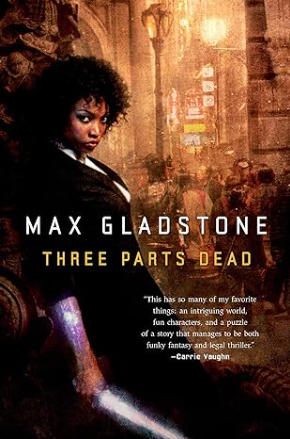
Max Gladstone’s Craft Sequence unfolds in the unique cityscape of the Craftlands, a world where magic is intertwined with commerce and law.
Gods exist, but they are bound by contracts and agreements with mortals.
Magic in the Craft Sequence is not just a force of nature but a legal and economic system.
Necromancers engage in contracts with the dead, while lawyers and craftsmen wield magical abilities to shape the legal and financial landscape.
The series explores the concept of gods as powerful entities with interests aligned with corporations.
Divine power and influence are portrayed as integral components of the economic and political systems.
Gladstone blends elements of fantasy, legal thriller, and urban fantasy.
The series offers a fresh take on familiar tropes while introducing innovative concepts, making it a standout in the fantasy genre.
These case studies demonstrate that lesser-known epic fantasy worlds can be just as intricate, thought-provoking, and engaging as their more mainstream counterparts.
Exploring these hidden gems allows readers to discover new perspectives on world-building, magic systems, and narrative structures, showcasing the breadth and diversity within the epic fantasy genre.
The Dying Earth by Jack Vance
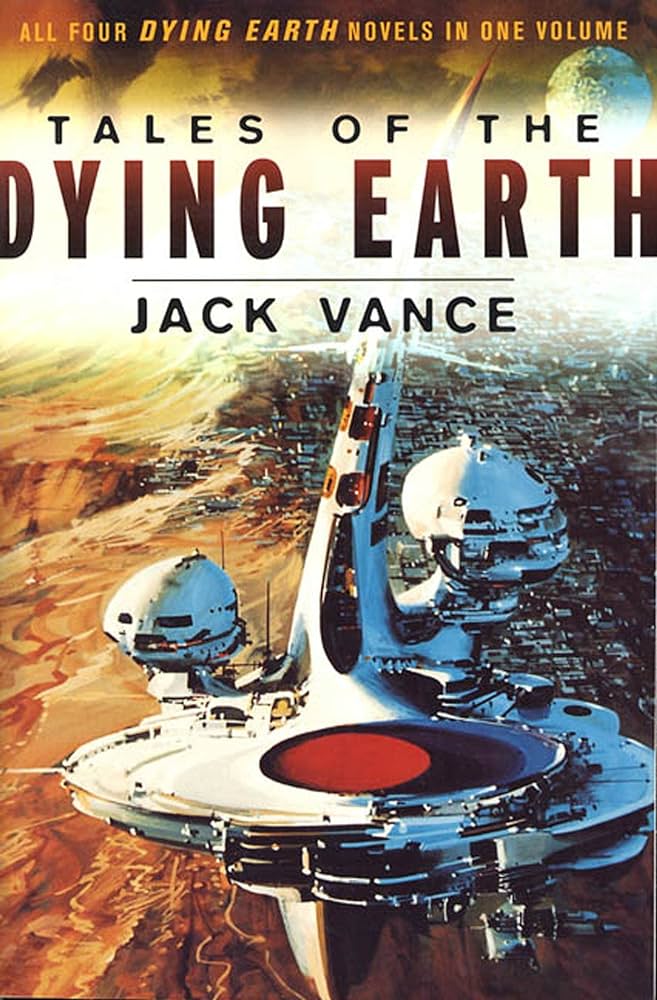
The Dying Earth by Jack Vance stands as a seminal work in the realm of epic fantasy, presenting readers with a unique and captivating world that defies conventional tropes.
Set in a far-future Earth where the sun is on the brink of exhaustion, Vance paints a vivid and evocative landscape that is both haunting and enchanting.
This classic series comprises interconnected stories and novels that collectively form a cohesive exploration of a world in the twilight of its existence.
At the heart of The Dying Earth is a world steeped in decadence, where the remnants of once-great civilizations crumble into decay.
Magic is not merely a force; it is a dwindling resource, and the last vestiges of sorcery become all the more precious as the world inches towards its inevitable demise.
Vance’s prose skillfully weaves a tapestry of vivid imagery, describing landscapes of desolation, ancient ruins, and mysterious artifacts that evoke a sense of wonder and melancholy.
One of the defining features of this epic fantasy world is Vance’s portrayal of magic.
The magic in The Dying Earth is not a benevolent force but a capricious and often perilous one.
Sorcerers and wizards, such as the memorable Rhialto the Marvellous, manipulate cosmic forces and engage in complex and arcane practices, adding layers of intrigue and danger to the narrative.
The characters populating Vance’s world are as diverse as the landscapes they traverse.
From eccentric wizards to roguish adventurers, each character contributes to the overall richness of the narrative. Vance captures the essence of the human experience within this fantastical setting, exploring themes of ambition, desire, and the pursuit of power against the backdrop of an impending apocalypse.
In The Dying Earth, Vance masterfully blends elements of science fiction and fantasy, creating a world that transcends genre boundaries.
The episodic nature of the stories allows readers to explore different facets of this unique world, encountering ancient beings, bizarre creatures, and moral dilemmas that add depth and complexity to the overarching narrative.
Ultimately, The Dying Earth stands as a testament to Vance’s imaginative prowess, offering readers an epic fantasy world that is as mesmerizing as it is haunting, and as enduring as the dying sun that casts its long shadows across the fading landscape.
The Black Company by Glen Cook
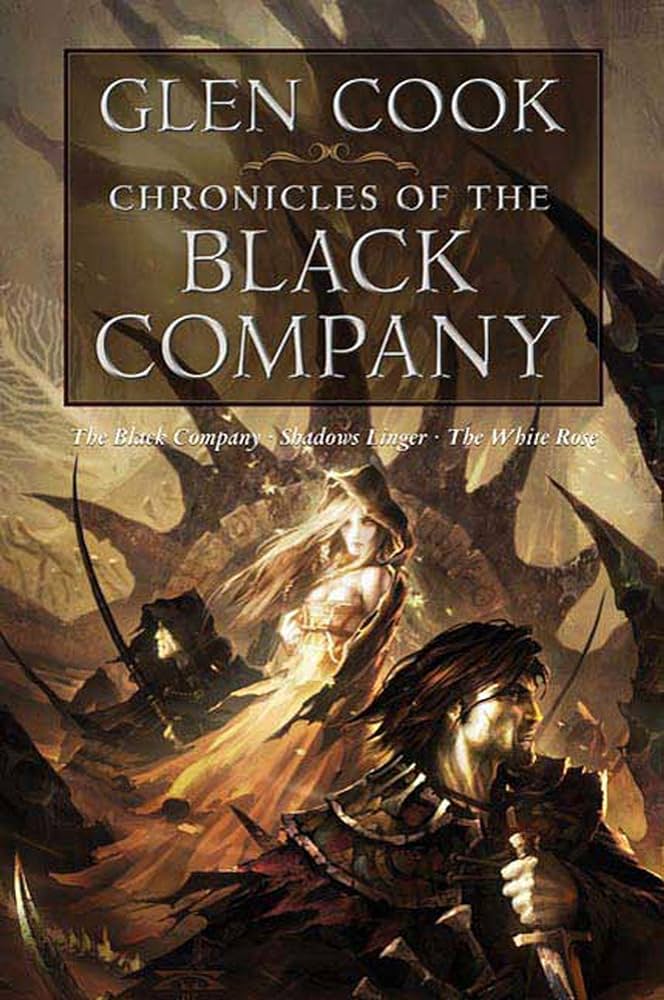
Glen Cook’s The Black Company introduces readers to a world that is distinctly dark, gritty, and unlike the stereotypical settings of traditional epic fantasy.
In this series, the world is not one of pristine landscapes and noble quests, but a place rife with political intrigue, moral ambiguity, and the harsh realities of war.
The narrative unfolds in a landscape where the boundaries between good and evil are blurred, and honor takes a backseat to survival.
At the core of this epic fantasy world is the eponymous Black Company, a mercenary group whose members, led by the enigmatic Captain Croaker, become the lens through which the reader explores the harsh and unpredictable realms of the narrative.
The world is characterized by the constant struggle for power among various factions, each with its own agenda and motivations.
This political complexity adds layers of depth to the storytelling, as characters navigate a landscape where alliances are fragile, and loyalty is a rare commodity.
Magic in The Black Company is not an ethereal force wielded by benevolent wizards but a raw and often destructive power.
The series introduces readers to formidable sorcerers whose abilities shape the course of battles and political machinations.
The magic is not romanticized but rather portrayed as a tool, a weapon, and a force that demands a price from those who harness it.
The world-building in The Black Company is notably grounded and realistic. Instead of grand castles and pristine landscapes, the setting is marked by war-torn cities, strategic military outposts, and the scars of conflicts that have left indelible marks on the land.
This gritty portrayal of the environment contributes to the overall sense of authenticity and immediacy within the narrative.
Characters in Cook’s world are morally complex, and the distinction between hero and villain is deliberately blurred.
The members of the Black Company are not flawless paragons of virtue but individuals with their own flaws, fears, and motivations.
The narrative unfolds through the eyes of the Company’s annalist, Croaker, whose perspective adds a layer of introspection and reflection to the events transpiring in this multifaceted world.
The Black Company stands out as an epic fantasy world because it defies traditional conventions, offering readers a setting that is more reminiscent of a military campaign than a fairy-tale kingdom.
Cook’s world-building excels in its realism, political intricacies, and portrayal of characters who grapple with the harsh realities of survival in a war-torn and morally ambiguous landscape.
It is a world where the lines between right and wrong are blurred, and where the only constant is the unrelenting march of the Black Company through the complex tapestry of conflict and intrigue.
The Riddle-Master Trilogy by Patricia A. McKillip

Patricia A. McKillip’s The Riddle-Master Trilogy unfolds in a rich and enchanting epic fantasy world, a realm where ancient mysteries, magical prowess, and the intricate interplay of riddles shape the very fabric of existence.
The setting is the land of Hed, a place imbued with mythic elements and a deep connection to the ancient lore that weaves its way through the trilogy.
At the heart of this world is the concept of riddles, a central theme that extends beyond mere wordplay.
Riddles are not only puzzles but potent expressions of magical power and metaphysical significance.
The protagonist, Prince Morgon, embarks on a quest to solve riddles that hold the key to understanding the mysteries of his world, ultimately revealing the intricate connections between the land, its rulers, and the ancient, enigmatic forces at play.
Magic in The Riddle-Master Trilogy is woven into the very essence of the world, and it is intimately tied to the land itself.
McKillip’s prose brings forth a landscape where the natural and the supernatural coexist seamlessly.
Shape-shifting, elemental forces, and ancient prophecies all contribute to the magical tapestry that defines this epic fantasy realm.
The world-building extends to the diverse cultures and races that inhabit the land of Hed. Each kingdom and people showcase unique traditions, histories, and relationships with the mystical elements of the world.
This cultural diversity adds layers of complexity to the narrative, creating a vibrant and immersive setting that goes beyond the immediate surroundings of the protagonist.
The trilogy’s epic nature is also evident in its exploration of themes that transcend the personal struggles of the characters.
The quest for knowledge, the balance between power and responsibility, and the unraveling of a grand tapestry of destiny contribute to the overarching epic narrative.
McKillip’s prose is lyrical and evocative, enhancing the sense of wonder and enchantment that permeates the world.
Furthermore, the trilogy showcases the evolution of characters against the backdrop of a world in flux.
Morgon’s journey is not merely a physical quest but a profound exploration of self-discovery and understanding.
As he navigates the challenges of ruling a kingdom, unlocking the secrets of the land, and confronting powerful adversaries, the world itself becomes a character in its own right—a dynamic force that shapes and is shaped by the characters’ choices.
Resources for Writers For Building Epic Fantasy Worlds
Building an epic fantasy world is a complex and rewarding endeavor that often requires a combination of creativity, research, and careful planning.
Here are some resources that writers can use to aid in the process of constructing rich and immersive fantasy worlds:
World-Building Guides:
The Kobold Guide to Worldbuilding by Janna Silverstein and Wolfgang Baur: This guide provides insights from experienced world-builders, offering practical advice on creating everything from cultures and religions to maps and languages.
Wonderbook: The Illustrated Guide to Creating Imaginative Fiction by Jeff VanderMeer: This resource combines visual elements with instructional content to help writers unleash their creativity and build fantastical worlds.
Epic Fantasy Map-Making Tools:
Inkarnate: A web-based map-making tool that allows writers to create detailed and visually appealing maps for their fantasy worlds. It’s user-friendly and suitable for both beginners and more experienced map-makers.
Azgaar’s Fantasy Map Generator: This is a powerful, browser-based tool that enables the generation of intricate fantasy maps. Users have control over various aspects like climate, biomes, and political borders.
Language Construction:
The Art of Language Invention by David J. Peterson: For writers interested in constructing fictional languages (conlangs), Peterson, a renowned language creator for TV shows like “Game of Thrones,” provides practical insights and techniques.
Zompist Language Construction Kit: Mark Rosenfelder’s online resource is an extensive guide for constructing languages. It covers grammar, vocabulary, and script creation, offering valuable insights for world-builders.
Cultural and Societal Development:
Cultures and Organizations: Software of the Mind by Geert Hofstede: This book explores cultural dimensions and can help writers develop diverse and culturally rich societies within their fantasy worlds.
The Writer’s Guide to Psychology by Carolyn Kaufman: Understanding psychological principles can aid in crafting realistic characters and societies. This guide provides insights into various psychological aspects that writers can apply to their world-building.
Epic Fantasy Writing Communities:
World-Building Stack Exchange: An online community where writers and world-builders can ask questions, seek advice, and share their knowledge on various aspects of world-building.
Reddit’s r/worldbuilding: A subreddit dedicated to world-building discussions, where writers can showcase their creations, seek feedback, and engage in collaborative efforts with other world-builders.
Research on Historical and Mythological Themes:
The Encyclopedia of World Mythology by Arthur Cotterell: A comprehensive guide that provides insights into various mythologies, helping writers draw inspiration from real-world cultural and mythological elements for their fantasy worlds.
History and Anthropology Books: Books exploring real-world historical periods and anthropological studies can provide valuable insights for creating believable and culturally diverse fantasy societies.
Remember that building an epic fantasy world is a dynamic and iterative process, and these resources can serve as valuable guides along the way.
Combining your imagination with research and a thoughtful approach will help you craft a world that is both immersive and captivating for your readers.
Conclusion
The allure of epic fantasy world-building is rooted in the human instinct for exploration and escapism.
Readers are drawn to the promise of uncharted territories, where fantastical landscapes unfold before their eyes, inviting them to traverse mist-shrouded mountains, enchanted forests, and sprawling cities of wonder.
The very act of creating a world from scratch, with its own rules and logic, allows authors to offer readers a ticket to realms beyond the confines of reality, tapping into the innate desire for adventure that resides within every reader’s heart.
Moreover, epic fantasy world-building provides a canvas for the exploration of universal themes and archetypal narratives.
Through the creation of distinct cultures, rich histories, and diverse societies, authors delve into the intricacies of human nature, morality, and the eternal struggle between good and evil.
The enduring allure lies not only in the fantastical elements but in the resonance of these worlds with the core aspects of the human experience.
Readers find solace in the familiarity of timeless themes woven into the tapestry of epic fantasy, creating a bridge between the fantastical and the profoundly human.
The immersive quality of epic fantasy worlds, meticulously crafted with attention to detail, fuels the reader’s imagination.
It’s a journey beyond the boundaries of the everyday, an odyssey that sparks the mind to envision worlds where magic is tangible, mythical beings roam, and destinies are forged in the crucible of epic quests.
The enduring allure stems from the sheer expansiveness of these worlds, inviting readers to lose themselves in the intricate landscapes and discover the secrets hidden within the folds of the narrative.
Furthermore, the enduring popularity of epic fantasy world-building is a testament to its adaptability.
While rooted in tradition, the genre has evolved to embrace contemporary perspectives, diverse voices, and innovative storytelling techniques.
Authors contin ue to push the boundaries, introducing new cultural influences, questioning established norms, and redefining the very essence of epic fantasy.
The allure lies in the genre’s ability to reinvent itself while preserving the core elements that make epic fantasy a perennial favorite among readers.

